DashClicks Blog
The industry's top experts offer their best advice, research, how-tos, and insights—all in the name of helping you level-up your business and online marketing skills.
Join Us!

Avoiding Duplication — Ensuring White Label SEO Doesn’t Overlap with In-House Work
When you decide to outsource SEO services, you're making a strategic move to scale your agency. Bringing a white label SEO company on board should feel like adding a powerful new engine to your operation, not like trying to merge two cars traveling in opposite directions. Yet, many agencies discover that this partnership, intended to streamline workflows, can inadvertently create a tangled mess of duplicated efforts.
Suddenly, two teams are targeting the same keywords, building links to the same pages, and even rewriting each other’s metadata. This isn’t just inefficient; it's counterproductive. Duplication wastes billable hours, confuses search engines, and can actively harm your client's rankings. It creates a cycle of confusion where neither team has a clear picture of the overall strategy, leading to inconsistent results and frustrated clients.
A 2025 analysis by Seize Marketing Agency highlighted that prolonged search ranking volatility, potentially due to inter-team overlap, has been a concern among SEO experts. This overlap isn't just about wasted resources; it’s a direct threat to campaign performance. This guide will walk you through the structural causes of duplication, provide actionable blueprints for creating a seamless workflow, and explain how to turn your collaboration with a white label partner into a true competitive advantage.
The Real Cost of Duplication in SEO Operations
For a busy agency, duplication might seem like a minor inefficiency, but its ripple effects are far more damaging than you might think. It's not just about doing the same work twice; it's about actively undermining your own success. When your in-house team and your white label SEO partner are working in silos, you lose billable hours, compromise data integrity, and send conflicting signals to search engines that dilute your campaign's effectiveness.
The hidden risks of SEO duplication are significant. They include:
- Keyword Cannibalization: When both teams optimize different pages for the same high-intent keywords, they force those pages to compete against each other in the SERPs. This splits authority and click-through rates, often causing both pages to rank lower than a single, unified page would.
- Conflicting Link Strategies: Imagine one team is executing a high-authority guest posting campaign while the other is focused on directory submissions. Without coordination, you risk creating an unnatural backlink profile or acquiring redundant links from the same domains, which can trigger spam filters.
- Contradictory Schema Markup: Inconsistent schema implementation on the same page can confuse search engine crawlers. For example, if one team uses Product schema and the other uses Service schema for the same offering, it creates ambiguity that can prevent rich snippets from appearing.
Consider this mini-example: a healthcare client had their in-house team and a white label SEO partner simultaneously optimizing product pages. The in-house team focused on long-tail, symptom-based keywords, while the external partner targeted broader, high-volume product terms. The result was two sets of pages competing for similar user intent, and both experienced a drop in their rankings. For agencies, the takeaway is clear: duplication isn’t just inefficiency—it's a form of brand erosion that scales with your client base.
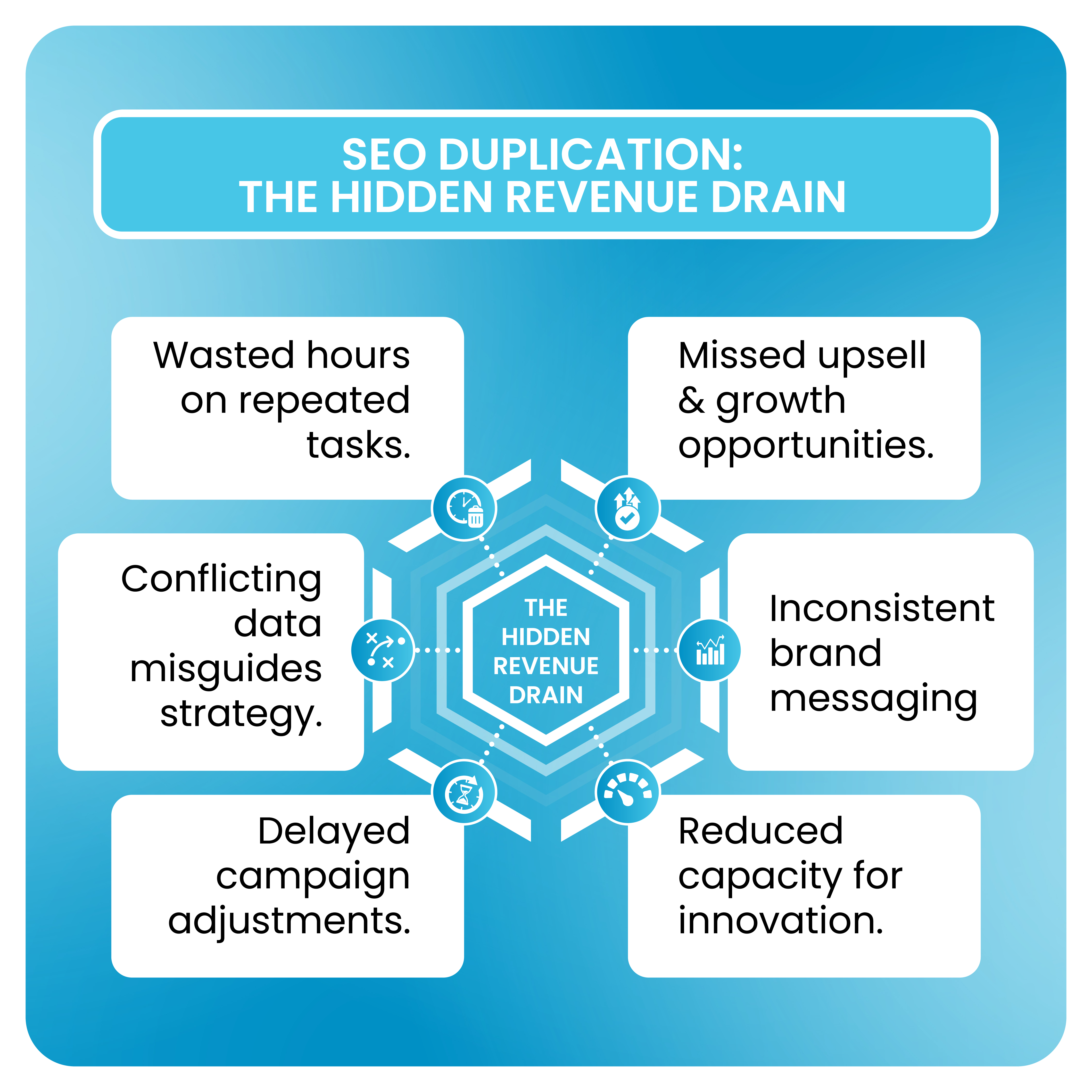
Why Duplication Happens: Deep Structural Causes?
Duplicated work is rarely the result of incompetence. More often, it stems from deep-seated structural issues in how agencies manage communication, data, and roles. Understanding these root causes is the first step toward fixing them.
- Fragmented Communication Chains: Most overlap begins with siloed task management. When a white label SEO company operates on assumptions because client communication isn't centralized, they're flying blind. Weekly email updates aren't enough to keep teams aligned on the dozens of micro-decisions made daily in an SEO campaign.
- Data Desynchronization: Your in-house team might use SEMrush for keyword research, while your partner uses Ahrefs. Different tools, reporting intervals, and tracking methodologies produce conflicting data. This leads each team to chase different metrics and prioritize different actions, creating a fractured strategy.
- Ambiguous Role Boundaries: Agencies often underestimate how granular their "responsibility mapping" needs to be. Simply assigning "on-page SEO" to one team and "off-page SEO" to another is too broad. Dynamic campaigns require clarity on who owns tactical tasks like "keyword intent validation," "internal linking," and "metadata implementation."
- Cultural Misalignment: A white label SEO partner typically operates based on global best practices and scalable processes. In contrast, an in-house team is often more attuned to the client’s specific brand voice, internal politics, and local market nuances. Without a bridge between these two perspectives, their efforts can diverge.
As SEO strategist Eli Schwartz put it, “SEO discussions that consider the knowledge and input from various cross-functional teams lead to the best output.” This lack of awareness is a systemic failure, not an individual one.
Designing a Duplication-Proof Workflow
To prevent overlap, you need to build a workflow grounded in shared visibility and clear accountability. It’s not about more meetings; it's about smarter systems.
1. The Visibility Rule: Both teams must work from the same live roadmap, not from separate documents that are updated weekly. Invest in a synchronized project management software like DashClicks' project management software or a centralized dashboard where progress is mirrored instantly. When one team completes a task, the other should see it in real time.
2. The SEO Role Grid: Create a detailed task responsibility matrix. This grid should break down broad categories into specific tactical actions and assign a clear owner to each.
- Keyword Research: White Label SEO Partner (Initial Research), In-House Team (Brand & Intent Validation).
- On-Page SEO: White Label SEO Partner (Technical Audits), In-House Team (Content Implementation & Metadata).
- Link Building: White Label SEO Partner (Outreach & Placement), In-House Team (Prospect Vetting & Approval).
3. Time-Based Collaboration: Establish alternating sprints to create a natural rhythm of collaboration. For example:
- Weeks 1-2: The white label SEO company handles technical audits, keyword research, and strategy development.
- Weeks 3-4: The in-house team uses those insights to execute content creation, on-page implementation, and client communication.
4. Feedback Integration: Every significant SEO action should trigger an asynchronous feedback loop visible to both teams. An eCommerce agency, for instance, eliminated duplicate product optimizations by creating a "Change Request Log" for every metadata edit. Any change made by either team was logged and synced in real time, preventing contradictory updates and reducing redundant QA cycles.
Smart Systems to Detect and Prevent Duplication
A solid workflow is essential, but technology can help enforce it. Smart systems can act as your safety net, catching potential overlaps before they cause damage.
- Integrated Data Ecosystem: The foundation is a centralized data environment. Use a platform that can pull keyword rankings, content performance, and backlink data into a single, shared dashboard. This gives both teams real-time visibility into the same source of truth.
- Automation Alerts: Set up automated triggers to flag potential duplication. For example, you can create alerts that notify both teams if two different pages on the same site start ranking for the same high-value keyword.
- Unified Content Inventory: Maintain a live, shared content map or inventory in a tool like Google Sheets or Airtable. This document should log every piece of content, its target keyword, user intent, owner, and the last update date. Before creating new content, both teams must consult the map to prevent overlap.
- AI-Assisted Auditing: Use AI-powered crawlers or internal tools to periodically audit your client’s site for similar optimization patterns. These tools can detect near-duplicate content, conflicting schema, or other subtle signs of overlap that might be missed by the human eye.
The core insight here is that prevention isn’t just about having the right tools; it’s about designing a system that ensures full visibility and synchronized execution.
Partner with DashClicks to scale your agency through precision, not redundancy. Our White Label SEO services are engineered to integrate effortlessly with your in-house workflows — ensuring that every keyword strategy, content update, and backlink campaign complements your existing efforts instead of competing with them.
With centralized dashboards, transparent task tracking, and unified reporting, you’ll always have full visibility into your campaigns. No more crossed wires or overlapping tasks — just synchronized execution that amplifies performance.
Whether you need end-to-end SEO management or support for specific deliverables like on-page optimization, link building, or content creation, DashClicks operates fully under your brand, maintaining your quality standards and client relationships. We help agencies scale sustainably — delivering measurable results without duplication, confusion, or missed opportunities.
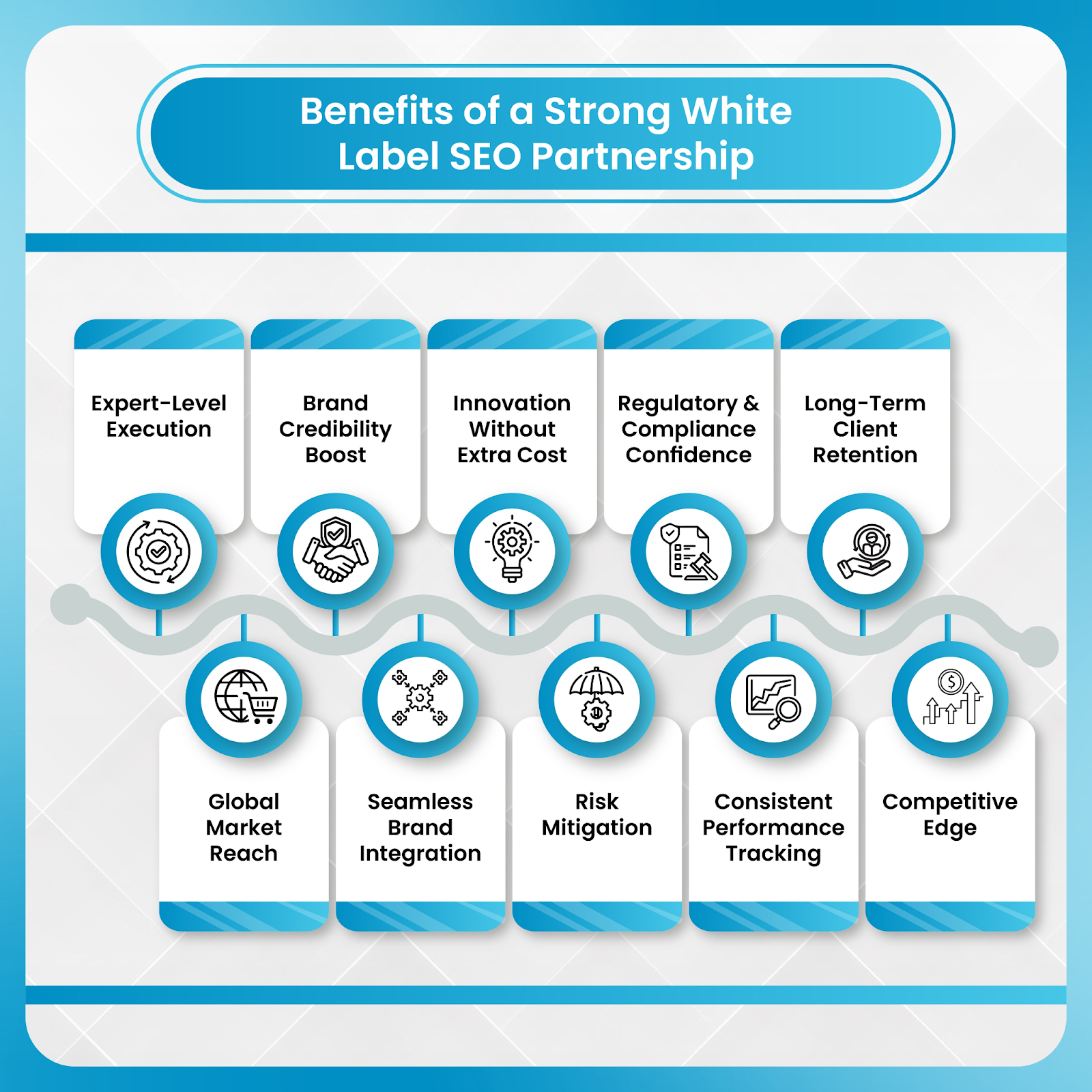
Red Flags That Duplication Is Already Happening
Even with the best systems in place, duplication can still creep in. Knowing the warning signs allows you to catch it early and correct course before it impacts results.
- Inconsistent Keyword Metrics: Your team and your white label SEO partner report rankings for the same keywords, but the numbers don't match. This is often the first sign of conflicting tracking setups or overlapping targeting efforts.
- Conflicting Backlink Profiles: You notice your client is getting multiple links from the same low-authority site, or the velocity of new links suddenly spikes without a clear strategy. This suggests that different vendors are conducting outreach without awareness of each other's work.
- Divergent Content Tone: You read two blog posts on your client's site targeting similar topics, but the writing style, tone, and terminology are completely different. This points to a lack of a unified content strategy.
- Unexplained Ranking Volatility: Your client's rankings for key terms are fluctuating wildly without any obvious external cause, like an algorithm update. Google often interprets internal keyword competition as topic confusion, leading to unstable SERP performance. According to Search Engine Land, as of March 2025, Google said that not all sites hit by core updates will fully recover to their previous peak rankings. Recovery depends on the severity, the quality improvements, and whether a site satisfies relevance and satisfaction criteria.
As an agency, you should conduct monthly "Overlap Audits." This involves sitting down and comparing optimization logs, keyword maps, and backlink reports from both teams side-by-side to identify any red flags proactively.
Coordination Blueprints That Actually Work
Preventing duplication requires more than just good intentions; it demands structured coordination. Here are a few practical blueprints that successful agencies use.
- Shared Governance Model: Assign a dedicated "SEO Liaison" or "Integration Manager." This person’s sole responsibility is to serve as the single point of contact between the in-house team and the white label partner. They review both workflows, resolve conflicts, and ensure the overall strategy remains cohesive.
- Real-Time Transparency: Use structured project dashboards with granular access controls. A white label SEO partner doesn’t need to see your agency's profit margins, but they do need to see the live status of all SEO-related tasks. This ensures privacy while still preventing overlap.
- Micro-Alignment Meetings: Instead of long, unproductive weekly calls, schedule short, 15-minute "intent syncs" every two weeks. The agenda for these meetings should be tightly focused on one thing: overlap prevention. Discuss only the tasks where responsibilities might intersect, such as new content ideas or technical changes.
- Shared Naming Conventions: This may sound simple, but it’s incredibly effective. Establish a consistent system for tagging and naming campaigns, tasks, and files across your CMS, analytics platform, and project management tools. This prevents duplicate tasks from being created simply because they were logged under different names.
Data Synchronization: Making Shared Reporting Work for You
Even the most talented teams can underperform if they’re working from disconnected data. When in-house and white label SEO teams track performance separately — using different KPIs, tools, and reporting intervals — the result is fragmented insights that lead to duplicated actions and inconsistent outcomes.
- Unified KPIs: The first step toward synchronization is alignment on what success actually means. Agencies should establish unified KPIs that reflect shared objectives, not isolated metrics. These may include organic conversions, content engagement rates, or a custom link quality index — all benchmarked under one reporting framework. This unified measurement ensures both teams are optimizing toward outcomes, not just outputs.
- Cross-Validation Reports: Data synchronization isn’t achieved through more reports; it’s achieved through reconciliation. Conduct monthly cross-validation reports where analytics data from both teams is compared side by side. This process reveals where overlapping optimizations are happening — for example, when two teams target similar keywords or duplicate link-building efforts.
When both teams work from a single source of truth, your client sees only one seamless narrative of performance. They can’t tell where your in-house SEO efforts end and your white label partner begins — and that’s exactly how it should be.
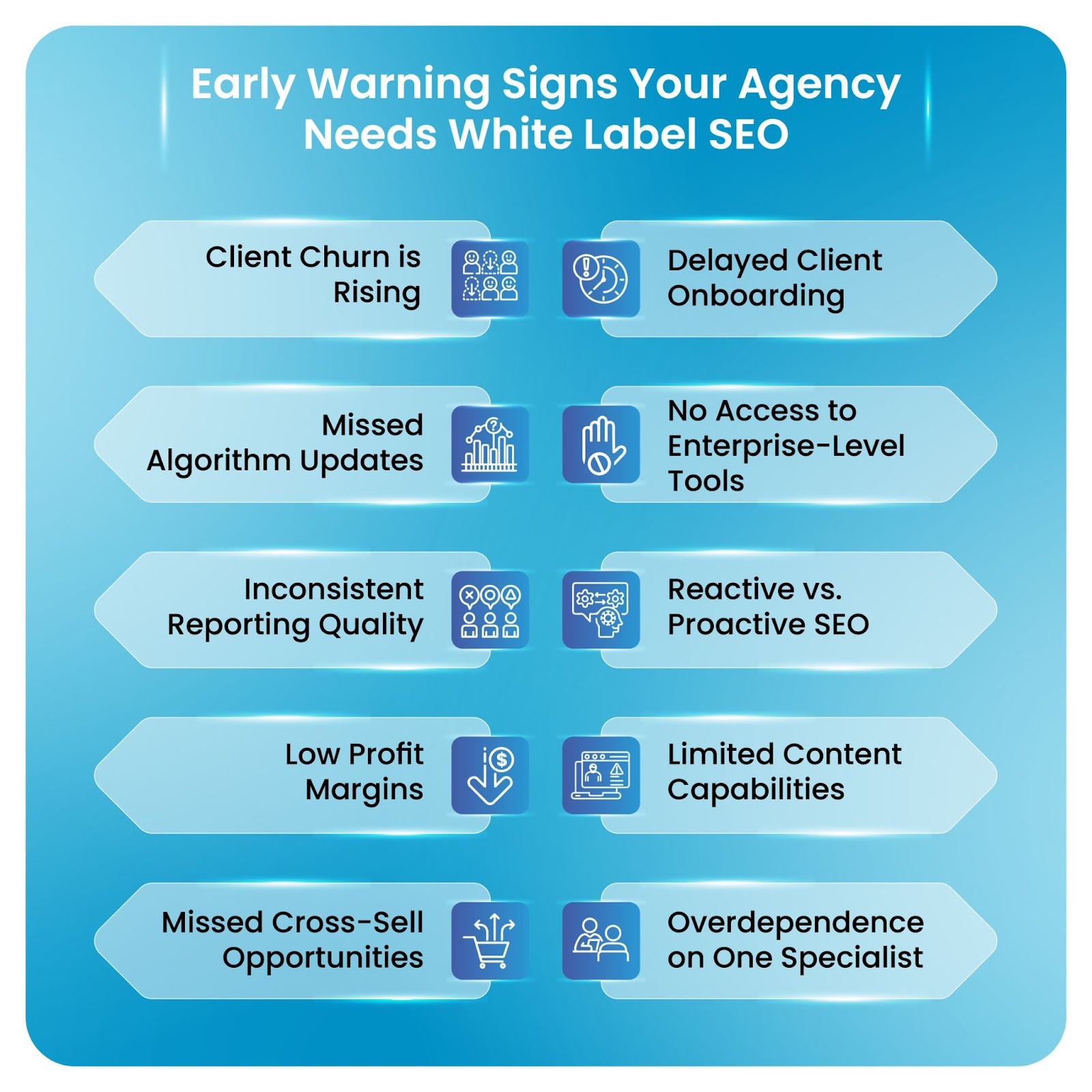
Continuous Optimization: Turning Coordination into a Competitive Advantage
Once duplication is eliminated, coordination becomes your differentiator. Seamless collaboration between in-house and white label teams isn’t just efficient — it’s a compounding advantage that accelerates innovation and scales impact.
- Iterative Ownership: Instead of dividing roles permanently, adopt an iterative ownership model where teams alternate specific optimization areas each quarter. This allows both teams to cross-learn, stay agile, and avoid stagnation. It also prevents overlap by ensuring clear temporal ownership — when one team is optimizing, the other is reviewing and analyzing.
- White Label as R&D Engine: Your white label SEO partner can be far more than an execution resource — they can serve as your R&D arm. Assign them innovation-driven initiatives like testing new schema markup strategies, experimenting with AI-assisted content optimization, or exploring upcoming algorithmic trends. This frees your in-house experts to focus on high-value client strategy, relationships, and brand alignment.
- Scaling Without Chaos: As your agency expands across markets and manages global accounts, duplication risks multiply — different languages, time zones, and cultural SEO nuances all introduce complexity. However, by establishing clear operational hierarchies, shared dashboards, and synchronized workflows, agencies can scale their SEO operations globally without chaos or redundancy.
When both teams operate in rhythm — one exploring innovation, the other maintaining strategic cohesion — coordination evolves into a true competitive advantage.
Key Takeaway Framework for Agencies
To build a duplication-proof workflow that aligns in-house and white label SEO services, agencies can follow this 5-step playbook:
- Define — Establish role boundaries at the task level, not just by department.
- Sync — Use shared dashboards, change logs, and agile sprints to maintain visibility.
- Detect — Set up automation and live monitoring to flag overlapping tasks early.
- Review — Conduct monthly overlap audits comparing both teams’ keyword maps, link data, and content logs.
- Optimize — Continuously evolve systems to reflect new campaign structures and market changes.
This framework ensures accountability, clarity, and momentum — turning duplication prevention into a scalable process rather than a reactive cleanup effort.
Conclusion: Efficiency Is the New Differentiator
In today’s competitive landscape, efficiency is no longer a backend metric — it’s a market differentiator.
Agencies that maintain duplication-free collaboration between in-house and white label SEO partners outperform their peers in campaign turnaround time. That speed translates directly into faster results, happier clients, and a stronger bottom line.
The goal isn’t simply to “divide tasks” but to integrate operations — creating an ecosystem where strategy, execution, and innovation move in sync.
A duplication-proof model doesn’t just prevent waste; it builds operational harmony — where every deliverable, every update, and every optimization feels like part of one unified strategy. That’s how agencies evolve from coordination to true collaboration — and from vendors to growth partners.
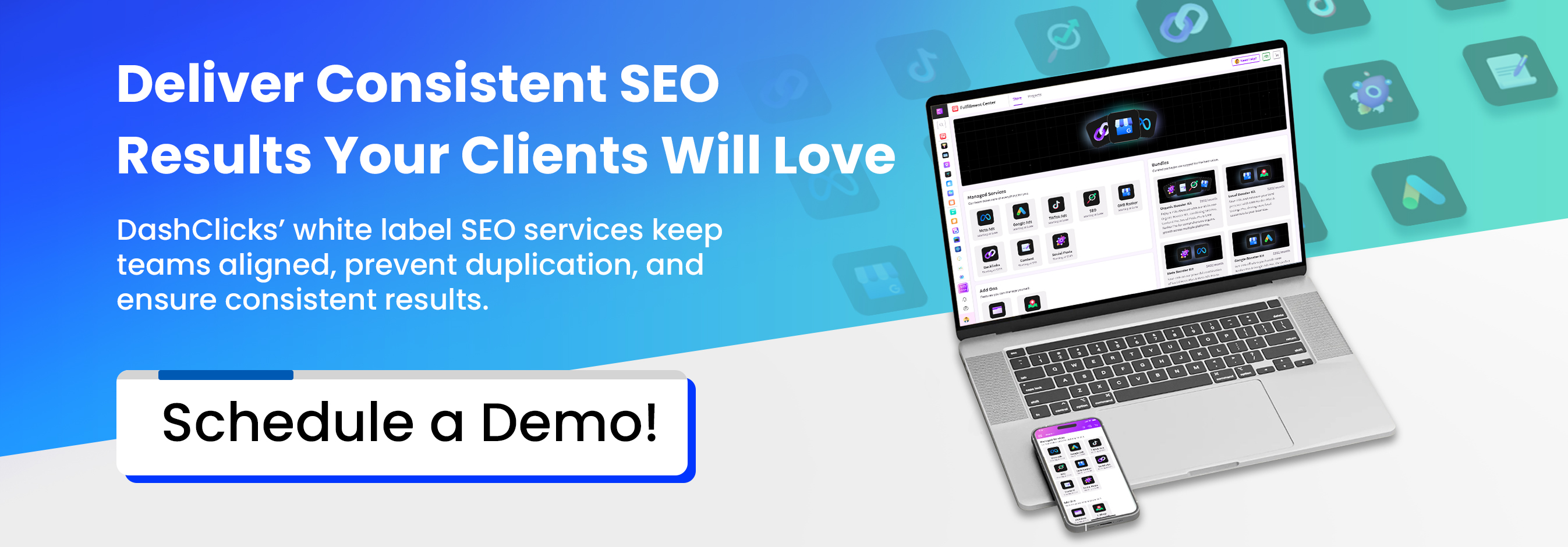

The Hidden Google Ads Suspension Risk in White Label PPC Partnership
White label services have revolutionized agency growth, but they've also introduced a critical blind spot that's causing Google Ads account suspensions at an alarming rate. Google suspended over 39.2 million advertiser accounts in 2024, marking a 200% increase from the previous year.
However, the explosion of Google Ads account suspensions tied to white label service models has become an underreported industry challenge.
The Algorithm Behind Suspensions: What Google’s AI Actually Looks For
To understand why suspensions occur so often in white label setups, agencies must grasp how Google’s compliance system works. Google’s AI doesn’t simply flag “bad ads.” It maps behavioral and structural patterns across accounts, domains, and payment networks to detect potential abuse.
Some of the top AI-driven signals include:
- Account Linkage Patterns: Shared IP addresses, payment profiles, or logins across multiple accounts.
- Landing Page Similarities: Duplicate content or cloned structures across client sites.
- Velocity Triggers: Sudden ad spending spikes or new domain launches.
- Policy Reuse Recognition: Ads that reuse creative or claim templates from previously suspended campaigns.
For white label PPC providers managing hundreds of accounts, these automated cross-signals can cause collateral suspensions — meaning compliant accounts can get penalized due to proximity to one flagged entity.
Understanding these signals is step one in reducing risk before they compound.
When White Label Efficiency Meets Google's Compliance Algorithms?
Your agency is thriving. White label PPC partnerships have allowed you to scale faster than ever, offering comprehensive digital marketing services without the overhead of building everything in-house. Your clients are getting results, your revenue is climbing, and your team can focus on what they do best.
Then the notification arrives: "Your Google Ads account has been suspended."
This scenario is playing out with increasing frequency across agencies that have embraced white label partnerships without understanding the hidden compliance risks they've inherited.
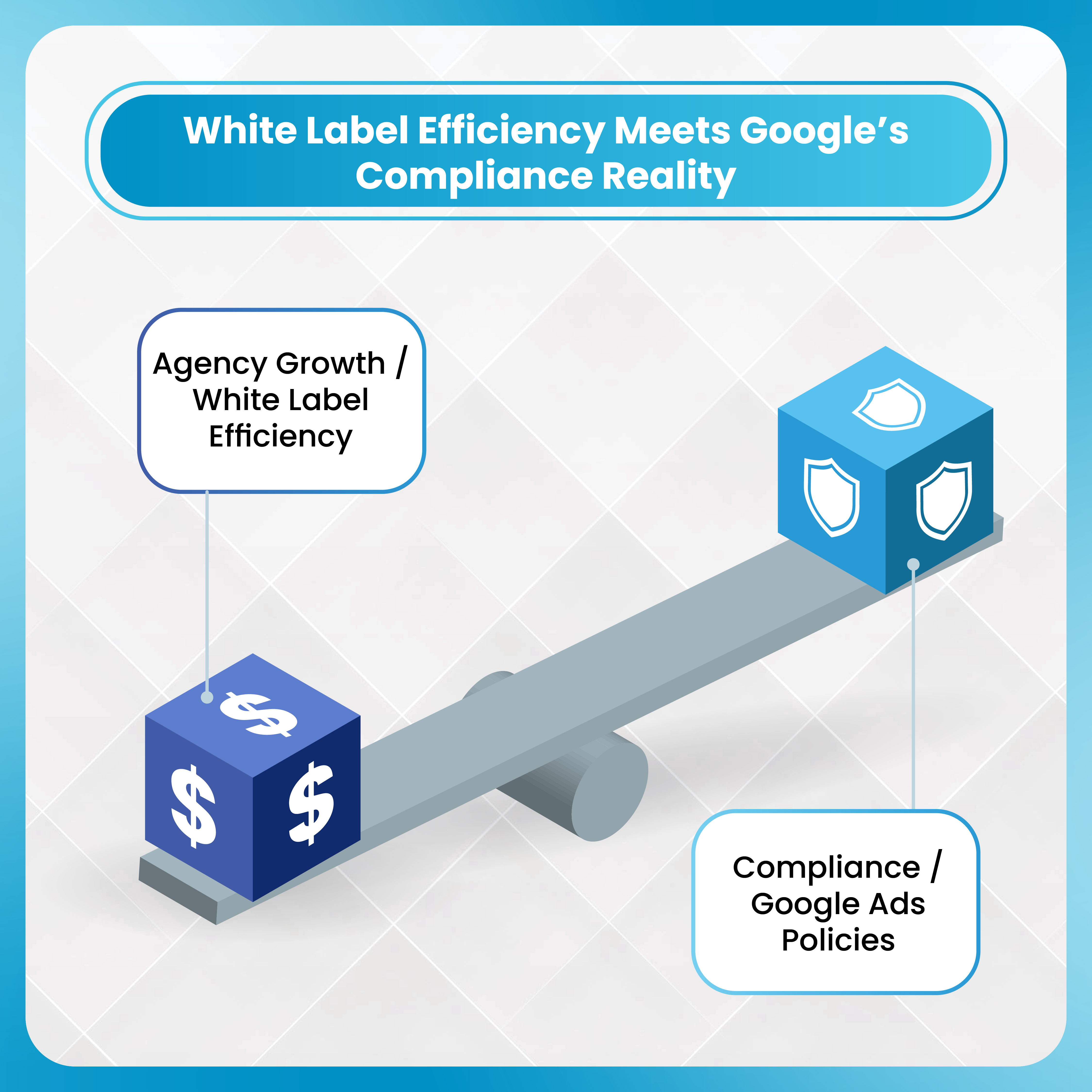
The White Label Compliance Gap: 5 Critical Risk Factors
1. Multiple Account Management Under Shared Infrastructure
Google's 2023 policy update reinforces the importance of managing all accounts with a high standard of compliance, and violations don't need to be identical to trigger suspensions across multiple accounts. When white label PPC providers manage campaigns for multiple agencies using shared systems, a policy violation in one account can trigger algorithmic flags across seemingly unrelated accounts.
Risk Factor: Managers who use the same credit card across multiple accounts can trigger Google to treat accounts as duplicate accounts and accuse them of circumventing policies.
2. Template-Based Campaign Structures That Trigger "Circumventing Systems" Flags
White label providers often use proven templates and frameworks to ensure consistent results across clients. However, reused content from previous campaigns or landing page templates from a flagged account can trigger Google's detection of potentially misleading practices.
Critical Insight: Google considers that you are trying to trick users and/or get around Google's systems, and it's not hard to unintentionally and unknowingly violate this policy.
3. Misrepresentation Risks in Franchise and Reseller Models
Franchises, affiliates, resellers, and service providers are at the highest risk under the new unacceptable business practices policy due to the complexity of their brand relationships and Google's enhanced algorithmic detection systems.
White label PPC services often serve businesses with complex relationships to parent brands, creating perfect conditions for misrepresentation violations.
4. Domain and Website Credibility Issues
Google's system often flags new domains or landing pages that look "too fresh" without sufficient content history. White label providers building new websites for multiple clients can inadvertently create patterns that trigger automated suspension algorithms.
5. Inconsistent Business Information Across Platforms
Google evaluates your entire user journey and reviews information from multiple accounts and third-party sources. Even compliant ads can trigger suspensions if landing pages or checkout flows violate unacceptable business practices guidelines.
When white label teams work across multiple platforms and accounts, maintaining consistent business information becomes challenging, creating compliance gaps that Google's algorithms are increasingly sophisticated at detecting.
How White Label PPC Partnerships Strengthen Google Ads Compliance
While white label services can create risks, strategic white label PPC partnerships can actually become a compliance advantage — if properly structured. Top-tier providers incorporate multi-layered safeguards designed to align with Google’s most recent advertiser behavior standards.
- Dedicated Compliance Frameworks: A best-in-class white label PPC agency builds campaigns using real-time compliance tracking tools, pre-ad approval checks, and historical violation databases. These systems ensure that ad copy, claims, and creatives stay within Google’s dynamic policy updates.
- Centralized Monitoring Across Accounts: Rather than triggering false linkages, compliant partners segment all accounts using unique billing profiles, domain verification, and IP segregation. This ensures cross-account independence while still allowing for unified performance tracking.
- Continuous Policy Synchronization: Reputable white label PPC agencies monitor Google’s policy documentation daily and retrain their internal ad ops teams on every update — particularly around misrepresentation, financial claims, and circumventing systems.
- Data Privacy and Transparency: Google’s current emphasis on user privacy (especially post-2024 data handling updates) means advertisers must maintain transparent data usage. Trusted white label providers build compliance around these frameworks, ensuring all data collection and conversion tracking align with privacy-first standards.
- Built-In Appeal Support: Some white label PPC partners even maintain direct relationships with Google representatives or policy specialists — allowing faster case review during suspension appeals.
In short, a compliance-conscious white label PPC relationship transforms a potential liability into an operational asset — reducing downtime, preserving ad credibility, and reinforcing agency reputation.
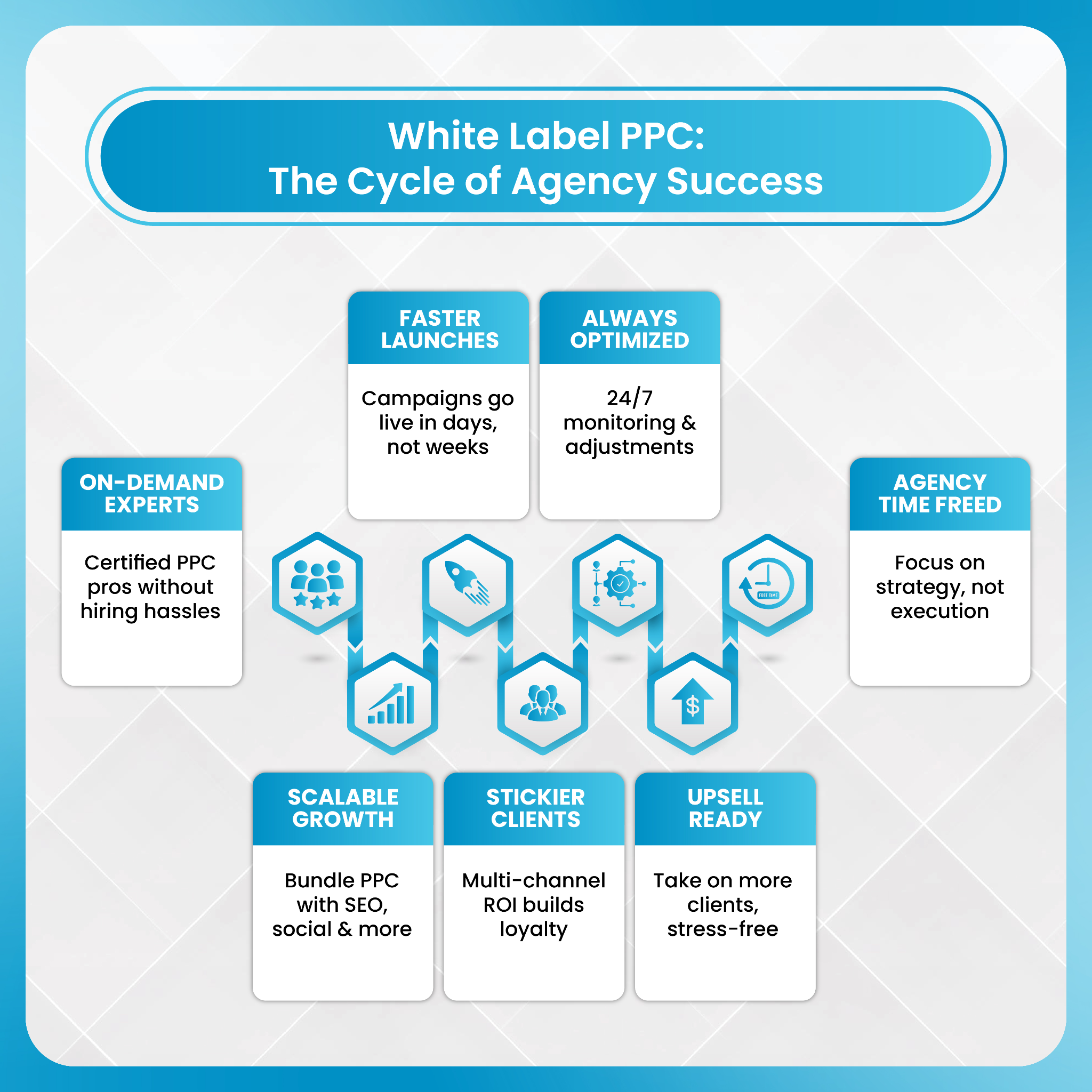
The Financial Impact: More Than Just Paused Campaigns
The consequences extend far beyond temporary advertising interruptions:
- Immediate Revenue Loss: Suspended accounts cannot run any ads, creating instant cash flow problems.
- Client Relationship Damage: Explaining suspension issues to clients while protecting white label partnerships creates trust issues.
- Opportunity Cost: Retaining existing clients costs five times less than acquiring new ones, but suspensions accelerate churn.
The Resolution Challenge: Why DIY Appeals Often Fail?
Most agencies attempt to resolve suspensions internally, but this approach faces several critical challenges:
- Limited Visibility: White label providers may not share complete campaign details needed for effective appeals.
- Technical Knowledge Gaps: Some individuals advertise on gig platforms such as Fiverr and Upwork, claiming to help get Google Ads accounts unsuspended, but we've seen some suspension problems compounded by "experts" from these platforms who have tried and failed.
- Policy Complexity: Google won't tell you exactly what the problem is, making it incredibly hard to identify and fix the actual violation.
Recovery Roadmaps: Tiered Action Plan Based on Suspension Type
Every Google Ads suspension falls into one of three categories — and each requires a distinct recovery protocol:
- Ad-Level Violations: Focus on modifying creative or landing page content. Avoid re-uploading near-identical versions, which triggers circumvention flags.
- Account-Level Suspensions: Conduct a full compliance audit. Document ownership, business verification, and billing methods before filing an appeal.
- Cross-Account or Manager Suspensions: These are the hardest to fix. The solution involves unlinking dependent accounts, migrating to clean infrastructure, and re-establishing trust via verified business documentation.
Agencies offering PPC services alongside their core offerings report 30–40% higher client retention rates and significantly larger average client values.
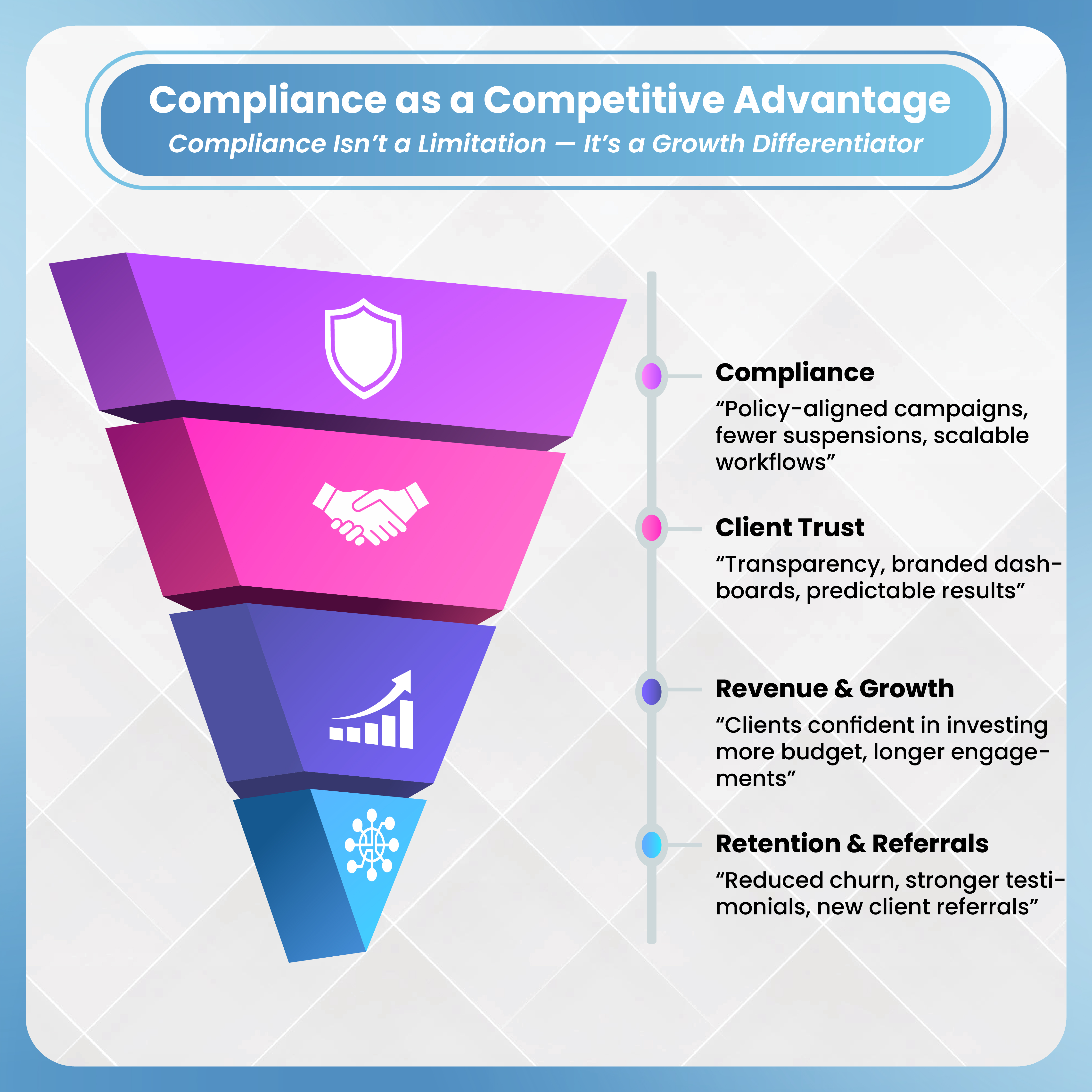
Building Suspension-Resistant White Label Partnerships
Partner Due Diligence Framework
Before engaging any white label provider, implement this compliance assessment:
- Infrastructure Audit: Verify how they manage multiple client accounts and prevent cross-contamination.
- Compliance History: Request detailed information about any previous client suspensions and resolution outcomes.
- Template Policies: Understand how they prevent reused content from triggering circumventing systems violations.
- Business Model Clarity: Ensure their service delivery model aligns with Google's transparency requirements.
Ongoing Monitoring Protocols
- Regular Compliance Audits: Quality white label Google Ads services provide comprehensive reporting that you can confidently share with clients, including keyword rankings, traffic analytics, backlink profiles, and technical audit results.
- Account Segregation: Implement clear boundaries between white label provider access and your direct client management.
- Policy Update Communication: Establish protocols for sharing Google policy changes and ensuring rapid implementation across all campaigns.
Emergency Response Preparation
Despite the best prevention efforts, suspensions can still occur. Agencies need specialized expertise for resolution because every Google Ads suspension is unique and requires a nuanced understanding of both the technical violation and the underlying business model.
When facing complex suspension scenarios, particularly those involving multiple accounts or circumventing systems violations, partnering with specialists like StubGroup becomes critical. Their expertise in navigating Google's appeal process and understanding the intersection of business models with compliance requirements can mean the difference between rapid reinstatement and permanent account loss.
The Future of Compliant White Label Partnerships
AI integration transforms white label delivery, and agencies must ensure their AI partners comply with privacy regulations and provide clear data handling policies. As automation increases, so does the need for sophisticated compliance monitoring.
The most successful agencies will be those that proactively address these risks rather than reactively dealing with suspensions. This means:
- Choosing Partners Wisely: Your reseller will be an extension of your team—so it's critical to choose wisely by looking for proven track records, transparency, and clear pricing models.
- Maintaining Oversight: Regularly audit the deliverables your white label team produces using live dashboards and transparent task tracking.
- Building Internal Expertise: Understanding Google's policies and suspension triggers, even when outsourcing execution.
Scaling Google Ads campaigns through white label partnerships is one of the most effective growth strategies for digital marketing agencies — but it comes with hidden compliance risks that can lead to account suspensions. DashClicks’ white label PPC services combine expert campaign management, branded reporting dashboards, and compliance-focused workflows to protect your client accounts while driving measurable results.
With structured processes, multi-account oversight, and proactive policy monitoring, your agency can confidently deliver high-performing campaigns at scale. With DashClicks, retain clients, reduce churn, and turn compliance into a competitive advantage — all while keeping your operational overhead low.
AI-Driven Compliance Monitoring: The Future of Safe Scaling
Modern compliance is no longer manual. Leading white label PPC ecosystems now integrate AI-driven compliance scoring — analyzing campaign text, ad assets, and URL structures in real-time for potential violations.
Platforms like DashClicks and Adverity enable agencies to:
- Detect flagged terms before submission.
- Monitor account trust scores across all clients.
- Auto-sync campaign metadata with policy changelogs.
These systems transform compliance into a predictive shield — alerting teams to risks before they cause suspensions. Agencies leveraging AI-based compliance tools report up to 45% fewer ad disapprovals (Source: Adverity Compliance Insights 2024).
Take Action Before It's Too Late
White label partnerships remain one of the most effective scaling strategies for digital agencies. DashClicks offers a complete package of white label PPC services, including a client reporting dashboard that is customized to showcase your agency's brand, demonstrating how proper implementation can drive growth while maintaining compliance.
The key is approaching these partnerships with full awareness of the compliance risks and implementing robust safeguards from day one.
Immediate Next Steps:
- Audit Current Partnerships: Review your existing white label relationships for potential compliance gaps.
- Implement Monitoring Systems: Establish ongoing oversight of white label campaign performance and compliance.
- Develop Response Protocols: Create clear procedures for handling suspension notifications.
- Build Expert Networks: Identify specialists who can assist with complex suspension scenarios.
The agencies that thrive in the next phase of digital marketing evolution will be those that successfully balance the efficiency of white label partnerships with the rigor of compliance management. The question isn't whether to use white label services—it's how to use them safely.
Don't wait for a suspension notification to discover the gaps in your compliance strategy. The cost of prevention is always lower than the price of resolution.
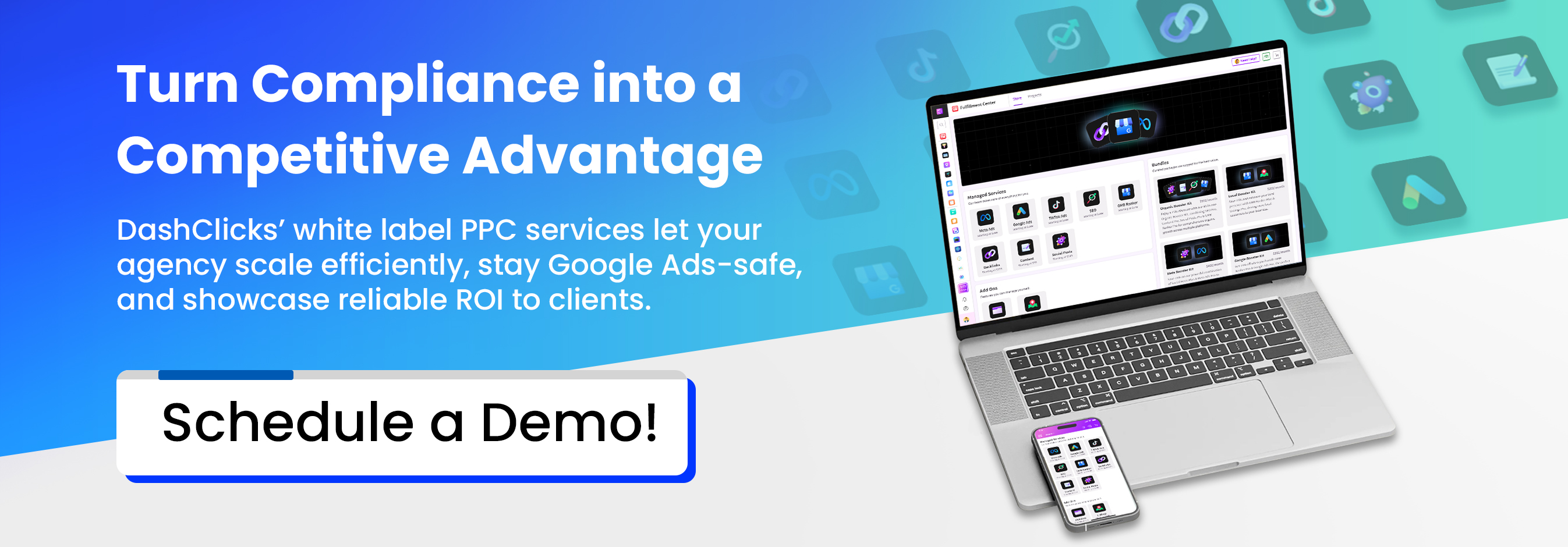

Deliver Localized Campaigns for Multi-Location Clients Through White Label Facebook Ads
Even as we head into 2025, Facebook continues to be a powerhouse for local discovery. With 2.9 billion active users and a staggering 19% year-over-year increase in location-based ad spending, its dominance is undeniable. For agencies managing multi-location brands, this presents a massive opportunity. However, it also brings a significant challenge: how do you effectively manage dozens, or even hundreds, of local ad sets, budgets, and creatives without compromising on performance, compliance, or that all-important personal touch?
Many agencies struggle to maintain consistent localization at scale. This often results in ad fatigue, overlapping audiences, and ultimately, wasted ad spend for their clients. The core issue is that what works for a storefront in Austin, Texas, won't necessarily resonate with customers in Anchorage, Alaska. A one-size-fits-all approach is a recipe for failure.
This is where a specialized approach becomes essential. White label Facebook ads services offer a powerful solution, providing the infrastructure to centralize campaign intelligence while delivering hyper-localized execution at each individual branch or store level. By leveraging expert teams and proven systems, agencies can finally deliver the local relevance their multi-location clients demand, turning a logistical nightmare into a scalable growth strategy.
The Power of Localization in Facebook Ads
In 2025, a truly "localized campaign" goes far beyond simple geotargeting. It’s about creating an experience that feels native to each community. This involves a multi-layered approach that includes:
- Dynamic Creative: Featuring images and videos that reflect the local environment, staff, and customer base.
- Regional Language Cues: Using local dialects, idioms, and slang to build a genuine connection.
- Event-Based Personalization: Tapping into local holidays, festivals, and community events.
- Local Conversion Intent: Tailoring call-to-action (CTAs) to specific store locations, such as "Visit our Houston store" or "Book a class in Miami."
The data backs this up. According to Meta Audience Research from 2024, 76% of users are more likely to engage with ads that reflect their local community. Think of a national fitness chain with over 50 studios. An effective local ad shouldn't just show a generic stock photo of someone working out.
Instead, it should feature a well-known trainer from the local studio, mention the specific city, highlight a relevant local offer, and use language that resonates with the community. Managing this level of detail across multiple locations quickly becomes exponentially complex without expert systems and trained specialists.
Why Agencies Struggle to Scale Local Campaigns?
Managing multi-location Facebook ad campaigns presents a unique set of challenges that can quickly overwhelm even the most organized agency. According to the 2024 Agency Benchmarks Report, 43% of agencies managing multi-location accounts cite "local campaign inconsistencies" as their number one performance barrier. These bottlenecks often stem from several core issues:
- Data and Account Silos: Juggling multiple ad accounts, billing methods, and reporting dashboards creates a fragmented view of performance, making it difficult to gather cohesive insights.
- Audience Cannibalization: When overlapping geofences are used, different store locations end up competing against each other for the same audience, driving up costs and reducing efficiency.
- Repetitive Creative Cycles: Manually refreshing ad creatives for each city is a time-consuming process that stifles creativity and leads to generic, uninspired campaigns.
- Lack of Unified Visibility: Without a centralized system, it’s nearly impossible to determine which local markets are performing best and allocate budgets accordingly.
These operational hurdles don't just impact performance; they erode client confidence. When a multi-location brand sees inconsistent results and wasted spend, churn rates inevitably increase.
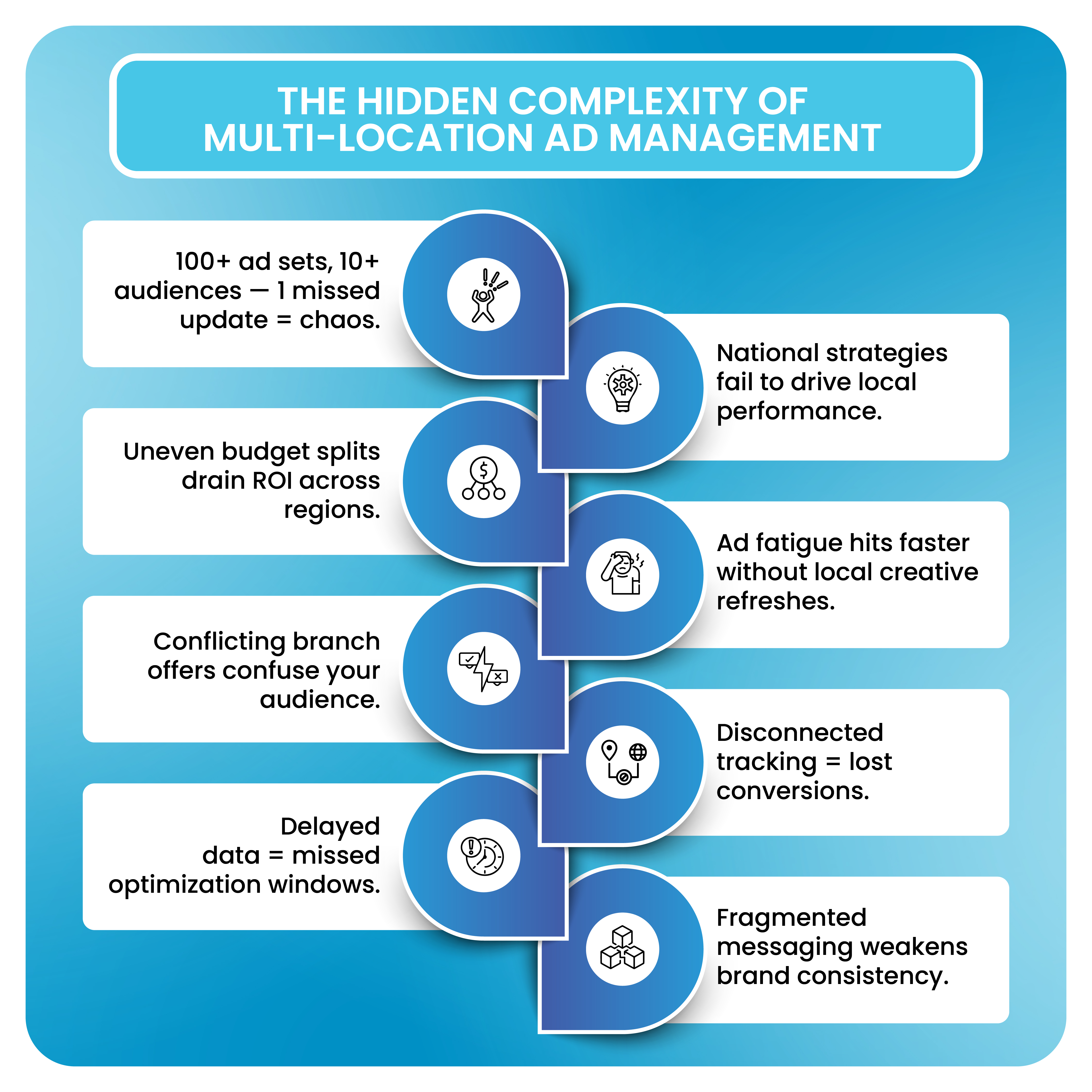
The Solution: White Label Facebook Ads Services
This is where white label Facebook ads services come in as an agency's secret weapon for localization. These services offer a unique model that combines centralized operations with distributed creative execution, providing the perfect balance of consistency and local flavor.
What makes this model so effective?
- Dedicated Specialists: You gain access to a team of ad specialists trained in local ad psychology, regional regulatory nuances, and Meta’s advanced local inventory tools.
- Centralized Ad Operations: A white label partner handles the complex backend logistics, from account setup to budget management, ensuring a streamlined and efficient process.
- Scalable Delivery: The white label model gives your agency the power of a full-scale, specialized team without the overhead of hiring and training. This allows you to take on larger multi-location clients with confidence.
- Seamless Integration: These services are designed to sync easily with your in-house strategy teams or your client’s marketing departments, creating a collaborative and effective partnership.
By partnering with a white label provider, you can offload the tactical execution while retaining strategic control, allowing your agency to focus on what it does best: building strong client relationships and driving growth.
How White Label Facebook Ads Services Deliver Hyper-Localization?
White label Facebook advertising providers use a sophisticated set of capabilities to make hyper-localized execution seamless. Here’s a breakdown of how they achieve this at scale.
1. Local Audience Blueprinting
Effective localization starts with a deep understanding of the audience. White label teams go beyond broad demographics to identify and target micro-audiences based on:
- Radius targeting around specific store locations.
- Neighborhood-level personas and behaviors.
- Store visit data and foot traffic patterns.
- Local event triggers, such as concerts, festivals, or school fairs.
For instance, instead of a generic "Parents in America" target, a skilled team would create distinct audiences like "Parents in New York attending school fairs" versus "Parents in Brooklyn using online tutoring apps." This level of data-driven segmentation ensures that every ad dollar is spent on reaching the most relevant local customers.
2. Dynamic Ad Creative Personalization
Consistency in branding is crucial, but it shouldn't come at the expense of local relevance. White label services utilize Dynamic Creative Optimization (DCO) and location-based templates to solve this. A 2024 Meta Ads internal study found that brands using localized DCO see a 32% increase in click-through rates.
White label providers maintain extensive creative libraries mapped to each location, ensuring that ads are always fresh and relevant. This system prevents creative duplication and allows for rapid deployment of new campaigns across all locations simultaneously.
3. Geo-Level Budget Optimization
Not all markets are created equal. Some locations will naturally deliver a higher return on ad spend (ROAS) than others. White label teams employ advanced budget reallocation systems to scale ad spend toward high-performing locations in real time. For example, one national franchise was able to dynamically reallocate 18% of its total budget each week, leading to a 21% higher overall ROAS. This granular level of daily monitoring and optimization is nearly impossible for an in-house team to manage at scale.
4. Localized Landing Pages & Conversion Paths
A successful ad is only half the battle. The user journey must remain consistent from click to conversion. White label teams often coordinate with local SEO and web development teams to ensure that each ad drives traffic to a location-specific landing page. When the ad copy, offer, and landing page are all aligned with the user's location, conversion rates can improve by as much as 28%.
5. Cultural and Linguistic Adaptation
Truly connecting with a local audience means speaking their language—literally and figuratively. This includes incorporating local festivals, idioms, and seasonal preferences into ad copy. An ad for a "Fourth of July Sale" in Texas wouldn’t make sense alongside a "Mardi Gras Special" in Louisiana. The best white label Facebook ads services have specialized copywriting teams that excel at this micro-localization while ensuring all messaging remains compliant with brand and platform guidelines.
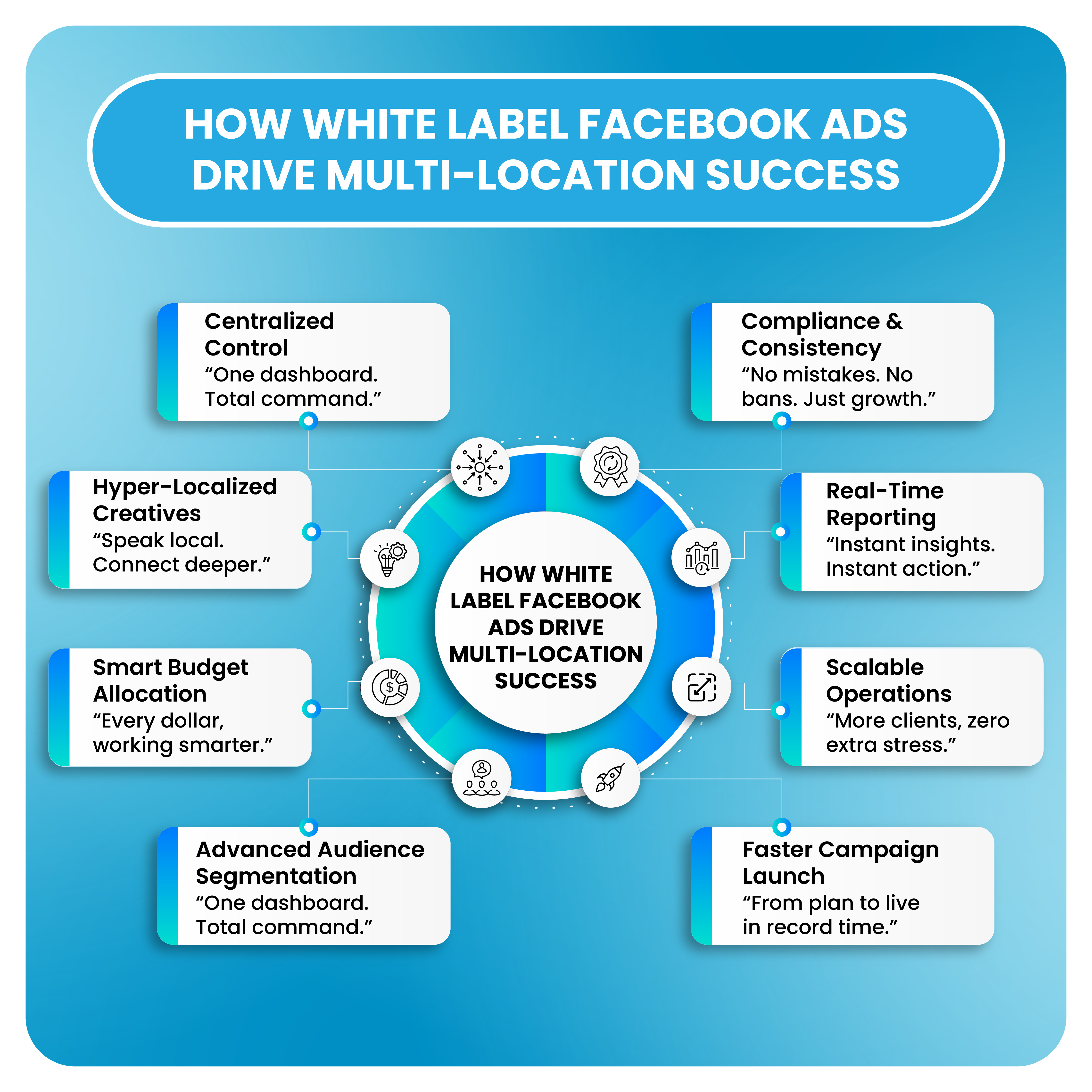
DashClicks - Partner That Enables Scalable Localization
Executing localized campaigns across hundreds of locations requires more than just a talented team; it demands robust systems and technology. White label Facebook ads providers like DashClicks have perfected this through an all-in-one platform designed for agencies. With shared dashboards and unified reporting portals, both the agency and the white label team can access a single, real-time view of campaign performance by location. This eliminates data silos and provides unparalleled transparency.
DashClicks leverages its powerful platform to manage everything from creative assets to reporting under one roof. Automated location-tagging systems prevent cross-location confusion, while API-based campaign synchronization allows a client with 100 stores to launch coordinated promotions in under 24 hours. This creates an efficiency loop where metrics are tracked centrally but acted upon locally, driving scalability without the need for constant micromanagement. The DashClicks platform empowers agencies to offer sophisticated, localized Facebook ads services to their clients, backed by a system that ensures consistency and performance.
Avoiding Common Localization Pitfalls
Without the right systems in place, even well-intentioned localization efforts can backfire. Some common pitfalls include:
- Duplicate Ad Fatigue: Showing the same creatives across different cities can cause relevance scores to drop and ad fatigue to set in.
- Message Misalignment: Promoting a national offer that doesn't align with local inventory or pricing can lead to customer frustration.
- Uncontrolled Ad Access: Allowing franchisees or local staff to run their own unauthorized campaigns can damage brand consistency and waste money.
White label processes are designed to prevent these issues. By standardizing campaign structures and maintaining strict compliance checks, they ensure a consistent and professional brand presence across all locations. Research from the Local Marketing Index 2024 shows that businesses that standardize their local ad processes see 27% lower CPMs and 19% higher retention.
Measuring Multi-Location Campaign Success
To prove the value of localization, you need to track the right metrics. Success isn't just about overall ROAS; it's about understanding performance at a granular level. Key metrics to monitor include:
- Local Reach and Engagement: How many people are seeing and interacting with ads at the store level?
- Geo-Segmented ROAS: Which locations are driving the highest return?
- Local Page Follow Growth: Are the ads driving an increase in local followers and community engagement?
- Cost Per Local Lead (CPLL): How much does it cost to acquire a lead in each specific market?
White label dashboards consolidate this data across hundreds of campaigns, making it easy to spot trends and opportunities. One agency, using a white label partner, tracked CPLL variance across 40 client locations and achieved a 25% average improvement in under three months.
Using White Label Services to Boost Client Retention
For multi-location brands, consistent performance is the key to long-term partnerships. When an agency can deliver reliable, localized results month after month, client retention soars. A 2024 Agency Success Report found that agencies outsourcing their multi-location ad campaigns to white label partners saw a 33% longer average client lifecycle.
White label partnerships make this possible by:
- Providing constant optimization cycles.
- Reducing the onboarding time for new store branches.
- Offering measurable local ROI data that builds client trust.
Ultimately, client retention isn’t just about delivering good results; it’s about creating a repeatable and scalable system for excellence.

Build a Localization-Ready Agency
Is your agency prepared to meet the growing demand for localized campaigns? Here are some strategic takeaways to get you started:
- Audit Your Current Capabilities: Be honest about how many client locations your team can truly manage effectively.
- Adopt a Hybrid Structure: Combine your internal strategy team with external white label execution for the best of both worlds.
- Create Localization Templates: Develop reusable templates for audiences, creatives, and reporting to streamline your workflow.
- Evolve Your Offering: Position your agency not just as an ad delivery service, but as a localized growth partner for every brand you work with.
Your Path to Scalable Local Growth
Multi-location clients are no longer satisfied with "more ads." They demand local relevance at scale. For many agencies, meeting this demand feels like an insurmountable challenge, requiring more bandwidth and resources than they have available.
White label Facebook advertising offers a clear path forward. It provides agencies with the operational depth, creative precision, and data visibility needed to deliver exceptional localized campaigns without expanding their internal teams. By embracing this model, you can transform a major industry challenge into your agency's greatest competitive advantage. Localization is no longer just an ad tactic—it’s an agency growth model.
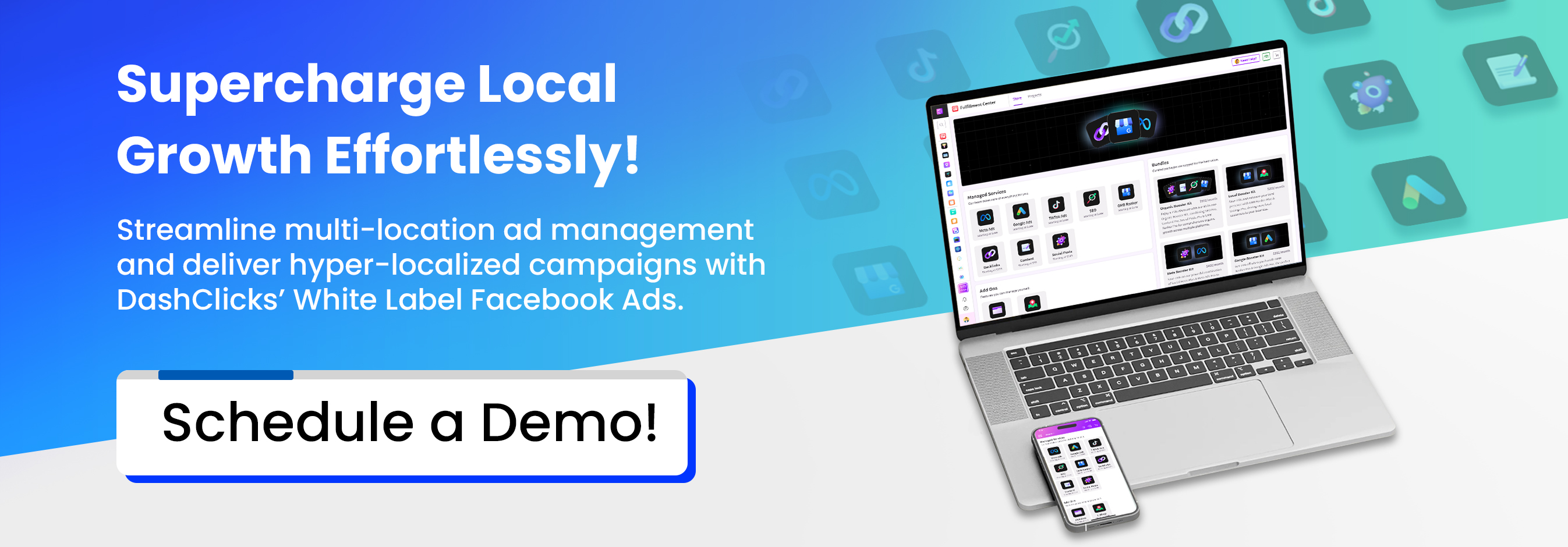

Local SEO Outsourcing Guide: What Agencies Can White Label for Faster Growth
Small businesses count on local search more than ever as it keeps getting smarter. Agencies that want to provide the best local SEO must do a lot of work, such as managing Google My Business and profiles, reviews, local citations, on-site optimization, local content, localized ads, and reports.
Many companies choose to "white-label" some or all of these tasks, which means they work with an expert and have them do the work under their own brand. So, agencies can grow and add services quickly without hiring more people. They can also focus more on client strategy and growth.
What's Different in Local SEO and Why It's Still Important?
There is more to local search than just a "Find" box on a map. Profiles, reviews, on-page signals, proximity, and user behavior can now all work together with AI features like automatically made calls, and more detailed profile parts. Search engines are pushing businesses to keep complete, verified profiles and share updates regularly to stay visible.
Since organic listings, map results, and ads are now all included in local search results, agencies need to keep client data up to date and coordinate all platforms.
The Top Local SEO Trends That Companies Need to Follow
As Google Business/Profiles change, profiles get more detailed and important for finding businesses. They include images, posts, menus, specials, reservation flows, and automated calls. It's important to keep these up to date.
- Regarding reviews and reputation as ranking signals, volume, freshness, and reaction speed are more important than ever.
- It's important to keep data consistent with AI-driven local features like automated call answering and ideas.
- The requirement for verified profiles to run local ads results from stricter regulations regarding privacy and verification for advertisements.
- Automated websites, emails, ads, and listings are now all linked into a single customer journey called "full-stack orchestration."
Further Reading: Local SEO Trends: What Agencies Can Outsource via White Label
What Agencies Outsource Through White Label Local SEO?
- Creating a Google Business Profile and Continued Optimization: Consistent updates, including hourly updates, posts, Q&A, and attributes, are necessary. A partner can do checks every week and large-scale publishing.
- Check Monitoring and Response: Review replies that are quick to build trust and boost rankings. Tools like Telebusocial AI chatbots can automate initial review responses and handle repetitive customer queries — while your white label local SEO team focuses on strategic client engagement.
- Managing Local Citations and Listings: Building and fixing NAP (name, address, and phone number) consistency across directories is a necessary but time-consuming process. White label SEO services take care of cleaning up and updating.
- Location and Local Content Pages: Blogs and business pages that are localized do better in search results. Outsourced writers give you ready-to-use material that is good for SEO.
- Managing Local Ads: Running geo-targeted ad campaigns takes expertise in bidding, creative, and tracking conversions, which is why many companies hire experts to do it for them.
- Local Crawl Optimization and Technical Audits: Expert partners can take care of schema markup, crawl problems, and speed checks, and they can fix things in order of importance.
- Dashboards and Reports: White label reporting tools put together dashboards with branded local data, which makes it easy to share results with clients. White label reporting tools like DashClicks’ marketing analytics platform and self-service analytics platforms put together dashboards with branded local data, making it easy to share results with clients.
- Local PR and Building Links: It takes time to reach out to local media, directories, and contributors for links. Qualified businesses can oversee the placement process.
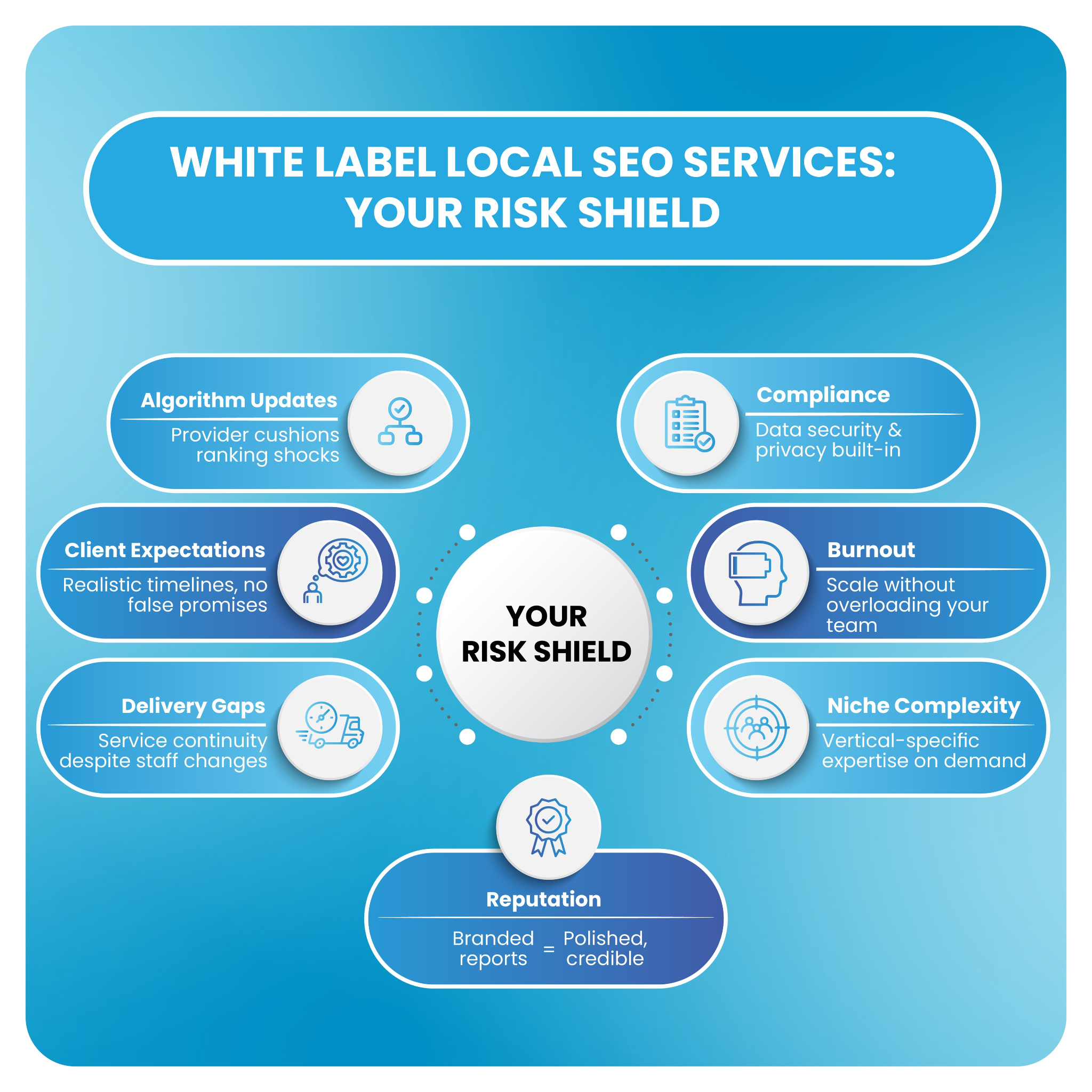
Hyperlocal Services Agencies Can White Label
White label local SEO lets agencies offer hyperlocal services efficiently, scale faster, and maintain consistent quality. Key services include:
- AI-Driven Google Business/Profile Management: Automate updates, posts, images, and attributes across multiple locations to keep profiles fully optimized.
- Dynamic Review & Reputation Management: Monitor reviews in real time, respond quickly, and generate insights to boost local rankings.
- Location-Specific Content Creation: Produce geo-targeted content optimized for search intent, NLP, and local keywords.
- Geo-Targeted Campaigns: Run integrated paid ads, organic search, and map campaigns with location-specific strategies and reporting.
- Local Link-Building: Secure backlinks from local blogs, directories, micro-influencers, and community partnerships to strengthen authority.
Key Benefit: Agencies can scale across locations, deliver premium results, and free up internal teams for strategy and client growth.
Why Agencies Should Not Outsource?
While white label local SEO services can save time and resources, some areas should always stay in-house. Client relationships and strategy are what make a business successful, so communication, planning, and building trust should never be given to someone else.
In the same way, the agency should still be in charge of significant web code changes and key technical site integrations to ensure accuracy and safety. Finally, sensitive PR issues or disputes necessitate a personal, human touch. These situations necessitate direct attention rather than third-party involvement.
How to Choose a White Label Local SEO Partner?
- Proven expertise in local SEO.
- Ability to integrate with your reporting tools and CRMs.
- Clear turnaround times and service agreements.
- Complete transparency reports and deliverables branded under your agency.
- Secure data handling.
- Flexible pricing models that fit your margins.
If your agency manages client relationships through a CRM like Salesforce, pay extra attention to how your white label partner handles data transfers and synchronization, like Lead411. Following Salesforce data migration best practices ensures every client record, review feed, and lead source moves between systems without errors or duplicates.
Risks of Outsourcing (and Ways to Fix Them)
Outsourcing can be beneficial, but it can also be dangerous if it's not done right. Low-quality work is a common problem that can be avoided by looking at samples and seeing how skilled a partner is before committing fully.
Another issue is data security, which is why it's important to only work with service providers that use safe methods and keep client credentials safe. Furthermore, relying too much on one outsourcing partner can leave you open to risks, so it's smart to have backup providers or other plans in mind to make sure things keep running smoothly.
In addition, implementing regular security awareness training for all team members helps reduce human error and strengthens your overall defense against phishing and other cyber threats. Security awareness training also ensures that employees and contractors understand best practices for handling sensitive data and recognizing potential security risks before they become serious problems.
Final Checklist Before Partnering
- You should ask for case studies and examples.
- Organize a short-paid tryout.
- Authorize service agreements and who owns data in writing.
- Find out how often and how clearly reports will be made.
- To ensure quality, set up regular review meetings.
Maximizing ROI: Metrics That Matter Beyond Rankings
Beyond traditional rankings, agencies need to measure the local impact of their SEO efforts across multiple dimensions:
- Local Lead generation & call tracking: Track phone calls, form submissions, and foot traffic driven by local search.
- Map engagement & multi-platform performance: Monitor how listings perform on Google Maps, voice assistants, and directories.
- Customer review performance: Measure volume, sentiment, and response speed to understand reputation impact on conversions.
- Conversion rate per location: Tie traffic and engagement to actual client outcomes for clear ROI.
- Mobile engagement: Track mobile clicks, directions requests, and interactions since most local searches happen on mobile.
- Predictive insights: Leverage historical data to anticipate seasonal spikes, local events, or trends in demand.
By tracking these metrics, agencies can provide clients with a full picture of how white label local SEO drives measurable growth, not just higher rankings.
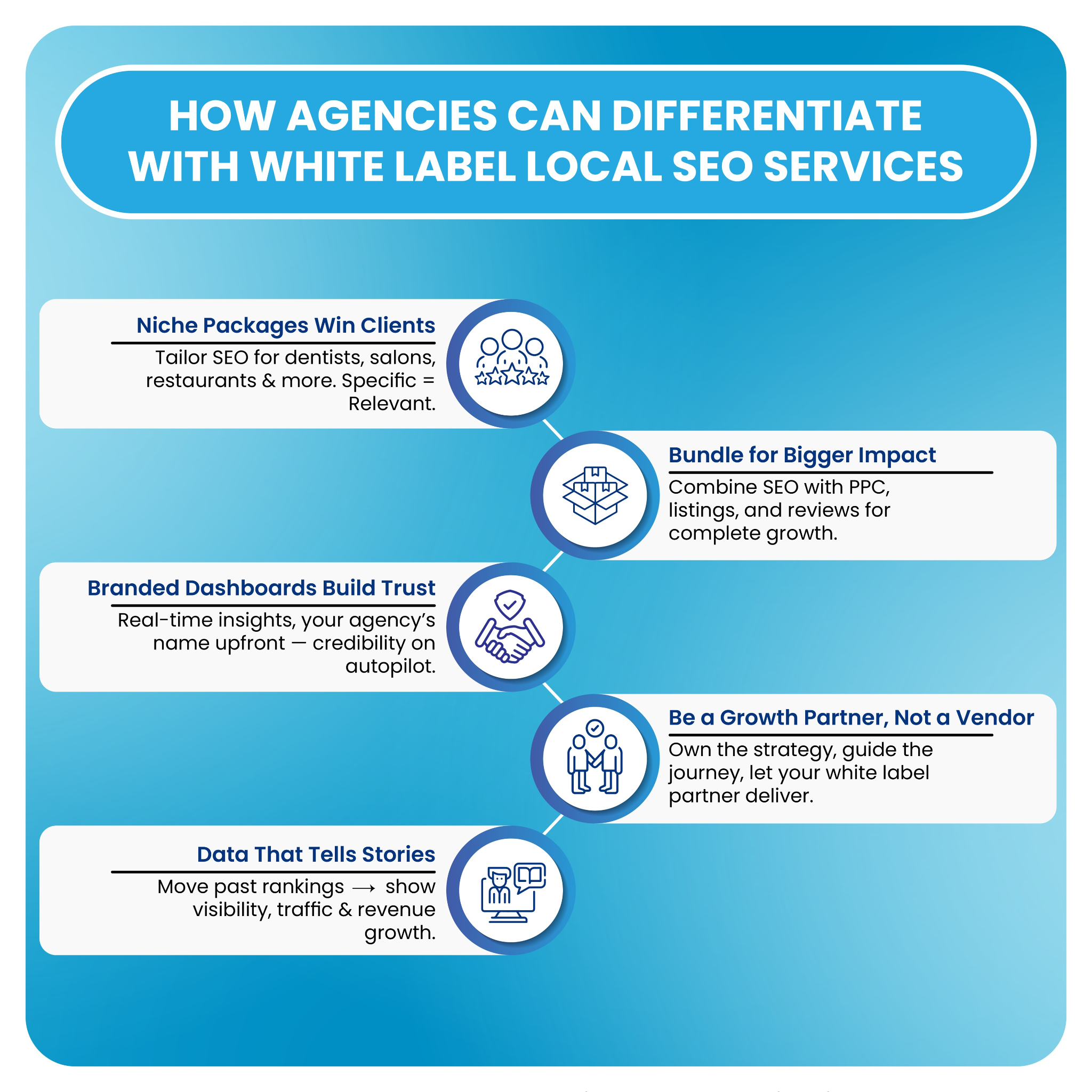
What's Next for White Label Local SEO?
White label local SEO is likely to grow even more in the coming years as AI, automation, and voice search become more important to customer choice. Partnering with people who can improve not only for Google but also for Apple Maps, Alexa, and other voice-driven assistants will be important for agencies.
Personalization will also be more important, with localized suggestions made based on how each person acts, like if someone is interested in a rebounder for fitness.
Agencies can make sure their services will still be valuable in the future and help their clients grow by working with partners who are ahead of these changes.
Empower your agency with DashClicks’ comprehensive white label SEO services designed to scale your business efficiently. From hyperlocal Google Business/Profile management and dynamic review monitoring to geo-targeted campaigns and location-specific content creation, we handle the technical execution so your team can focus on strategy and client growth. Our services include advanced local link-building, technical audits, citation management, and custom reporting dashboards — all fully branded under your agency.
With DashClicks, you can offer premium local SEO services without expanding your in-house team, maintain consistent quality across multiple locations, and deliver measurable results that impress clients. Turn your agency into a full-service powerhouse while keeping control of client relationships, strategy, and outcomes.
Wrapping It Up
It's not about cutting cuts with white label local SEO; it's about making good use of your resources. When agencies outsource correctly, they can add more services, speed up delivery, and keep customers happy without putting too much on their own staff. To be successful, you need to choose the right partner, stay in charge of the client's plan, and keep a focus on quality all the time. White label services can help companies stand out in a local search market that is getting more competitive and based on AI.
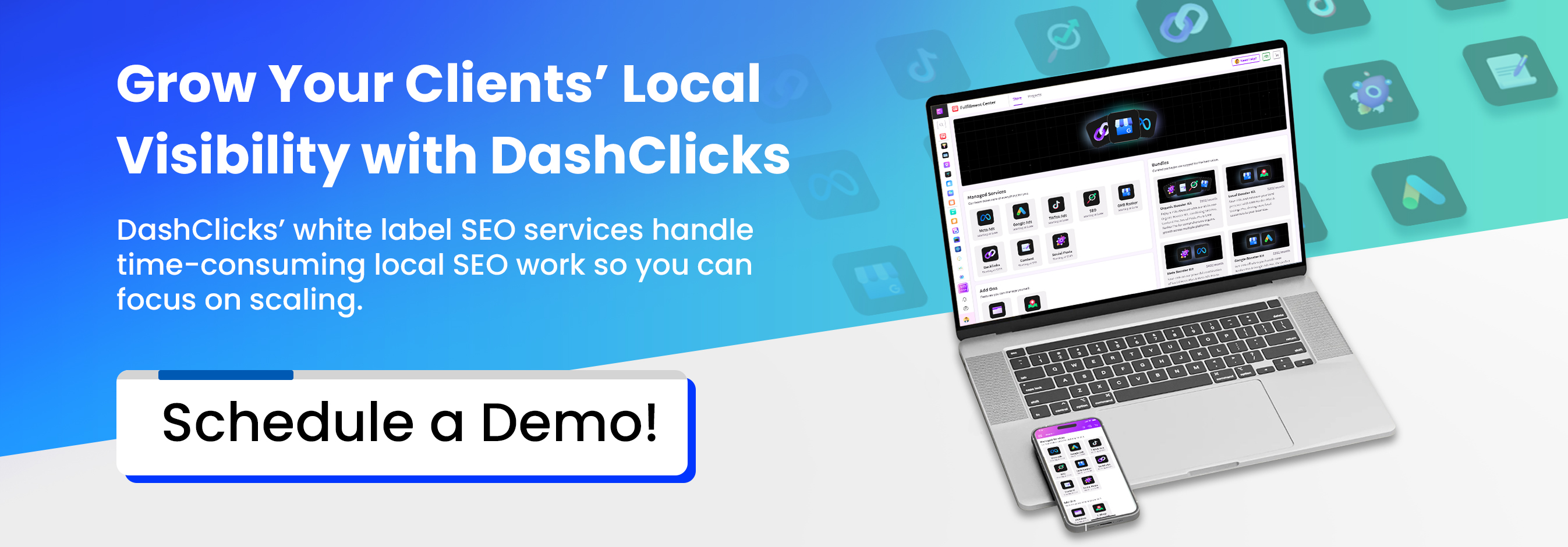

From One-Off Projects to Retainers: How White Label PPC Builds Long-Term Client Value
In the agency world, the project-based model can feel like a revolving door. You pour immense effort into a one-off campaign, deliver impressive short-term results, and then watch the client walk away. This cycle comes with hidden costs: high churn rates, client dissatisfaction when the initial momentum fades, and a significant loss in potential lifetime value. For many agencies, it’s a constant treadmill of prospecting for new clients just to replace the ones who leave.
This creates a serious dilemma for growing agencies. How do you increase revenue and secure stable, predictable income without overextending your internal resources or burning out your team? The answer often lies in shifting clients from short-term projects to long-term retainers, but making that transition is easier said than done. It requires proving ongoing value, building deep strategic relationships, and consistently delivering results that compound over time.
This is where white label PPC becomes a powerful lever for growth. By partnering with a specialized white label PPC agency, you can unlock the capabilities needed to secure long-term commitments. A 2024 AdStage Agency Survey highlighted this shift, revealing that agencies outsourcing their PPC services onboard new clients into retainer programs 30–40% faster. By leveraging external expertise, agencies can transform their service model from a reactive, short-term approach to a proactive, long-term partnership.
Why One-Off Projects Erode Client Lifetime Value?
While one-off projects can provide a quick revenue boost, they often undermine an agency's long-term stability and profitability. The very nature of these projects creates inefficiencies and missed opportunities that prevent the development of a lasting agency-client relationship. When campaigns are episodic, so are the results, making it difficult to demonstrate the compounding value of a sustained strategy.
One of the biggest drawbacks is the lack of cumulative insights. Each short-term campaign starts from a near-zero baseline, preventing you from gathering the rich, historical data needed for deep optimization. You might achieve a quick win, but you lose the chance to learn from trends, seasonal shifts, and evolving customer behaviors. This stop-and-start approach also leads to hidden operational drag. Frequent account handovers, duplicated discovery audits, and inconsistent optimization strategies waste valuable time and resources.
Furthermore, project-based work limits your strategic influence. Once the project is over, clients may turn to other agencies for their ongoing marketing needs, viewing your team as tactical executors rather than long-term strategic partners. This not only results in lost revenue but also diminishes your ability to guide the client's overall marketing direction. A unique angle often overlooked is how project-based PPC limits behavioral learning. Without continuous campaign data, the opportunity for predictive optimization—anticipating what will work next based on past user behavior—is lost, keeping your strategies reactive instead of proactive.
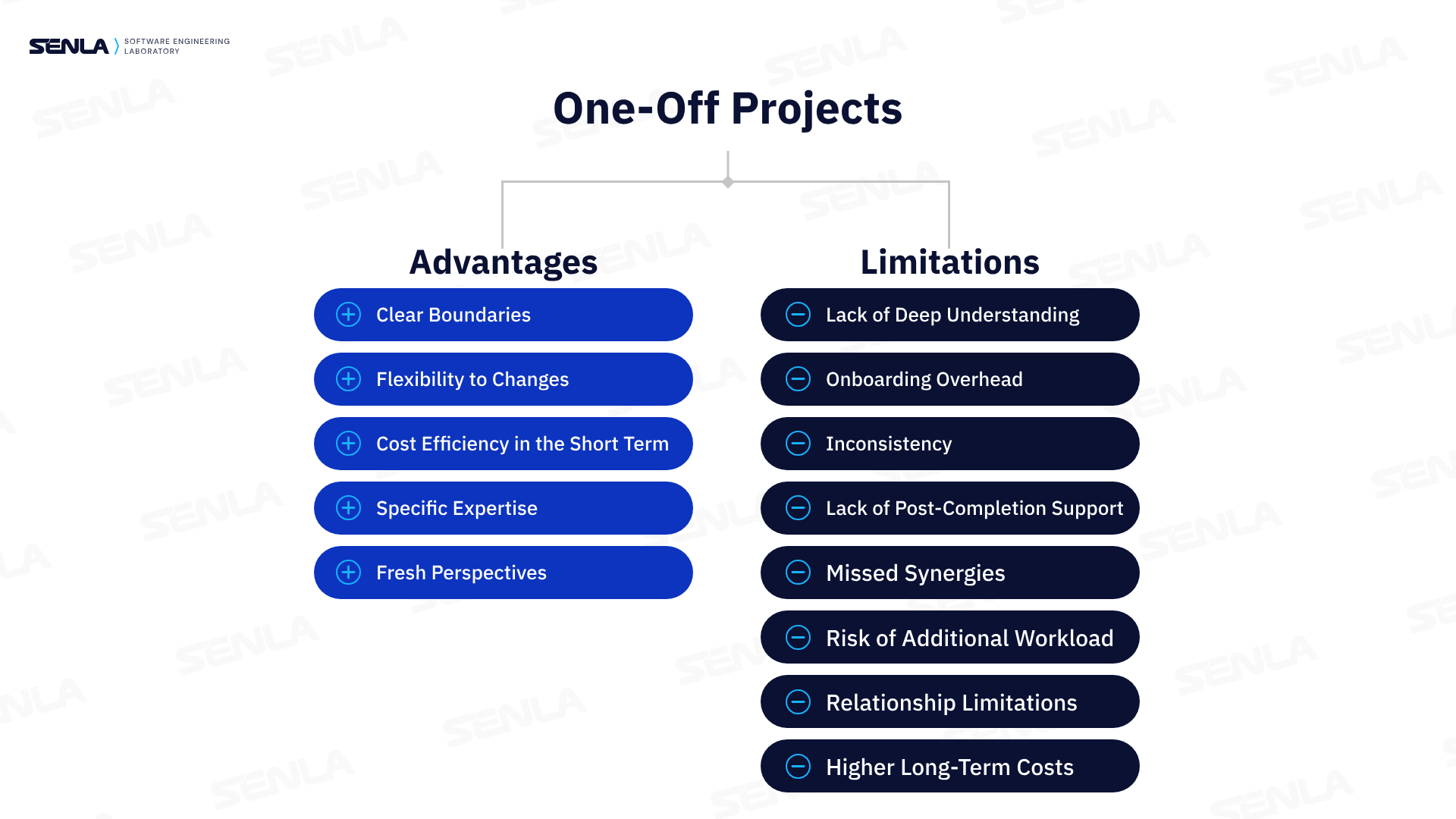
Image Source: Senla
How White Label PPC Enables Agencies to Lock in Retainers?
Transitioning clients to retainers requires demonstrating a clear, forward-looking strategy that promises continuous growth. A white label PPC agency provides the specialized resources and strategic firepower to make this possible. By partnering with experts, you can offer sophisticated, long-term plans that your in-house team might not have the bandwidth or specific expertise to develop and manage.
1. Predictive Campaign Roadmaps
A key benefit of working with a white label partner is the ability to create predictive campaign roadmaps. These aren't static, one-time plans. Instead, they are dynamic, multi-month optimization strategies that evolve based on real-time performance signals.
A white label team can analyze initial campaign data to forecast future performance, identify growth opportunities, and map out a clear path to achieving the client’s long-term goals. This proactive approach shows clients that you are thinking beyond the immediate project and are invested in their sustained success, making a retainer a logical next step.
2. Adaptive Budget Scaling
Clients on retainer expect their budgets to be managed dynamically to capitalize on opportunities and mitigate risks. A white label PPC provider can handle this complex task without straining your agency's resources. They have the systems and expertise to monitor campaign performance across multiple channels and adjust budgets in real-time.
Whether it's shifting funds to a high-performing ad group or reallocating spend during a seasonal spike, adaptive budget scaling demonstrates a level of strategic agility that justifies a long-term partnership.
3. Vertical Intelligence at Scale
Many white label PPC providers specialize in specific industries, such as SaaS, e-commerce, or local services. This vertical-specific expertise is a powerful asset that you can brand as your own. Your partner brings a deep understanding of industry benchmarks, competitive landscapes, and audience behaviors, allowing you to deliver highly relevant and effective campaigns.
For example, an agency that partnered with a white label provider was able to implement a six-month, cross-channel plan for an e-commerce client. The plan included automated retargeting sequences and audience segmentation based on industry best practices, resulting in a 45% increase in client retention. This level of specialized knowledge positions your agency as an indispensable expert in the client's field.
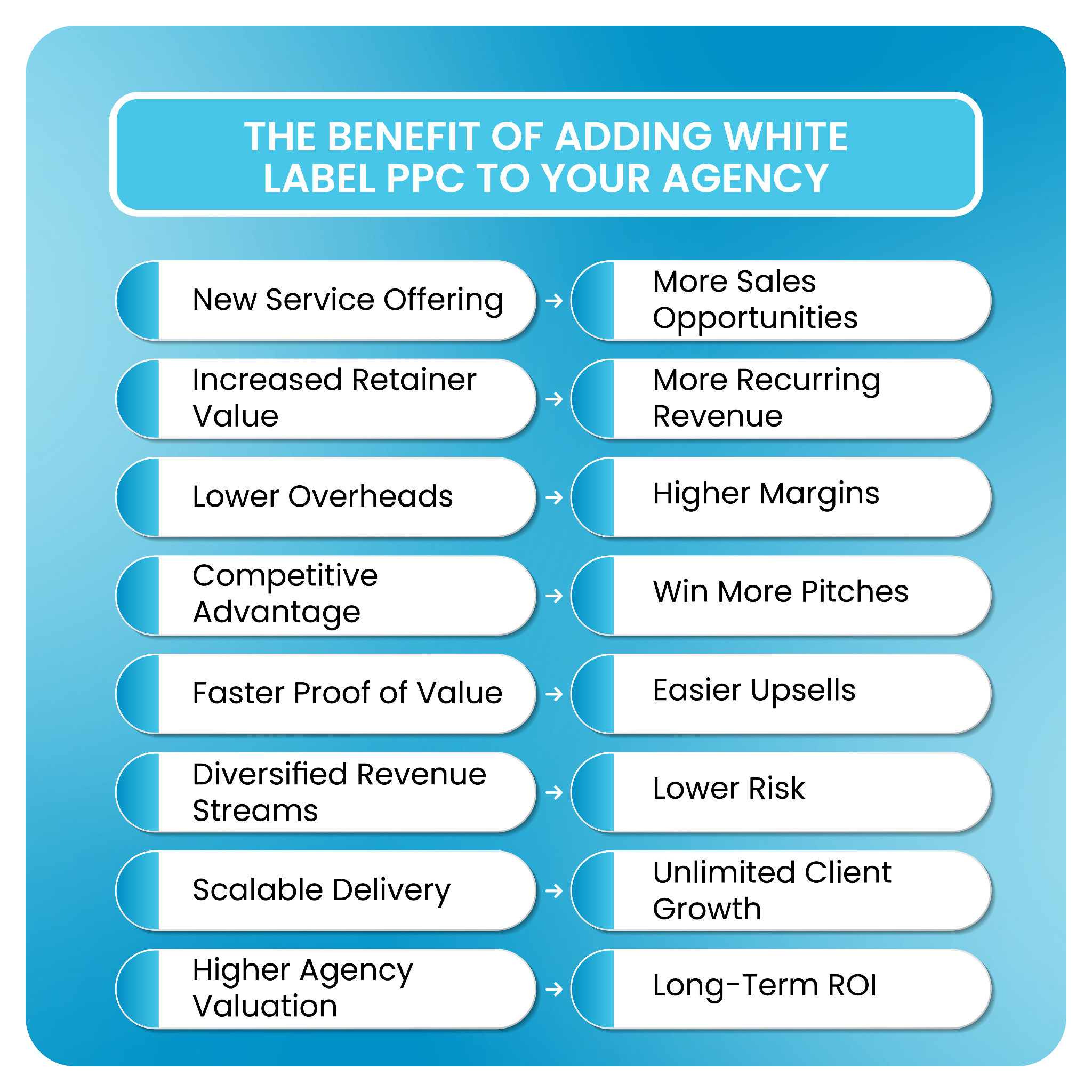
Creating Compounding Value with White Label PPC
The true advantage of a retainer model lies in its ability to create compounding value. Each month, your strategies become smarter, your targeting more precise, and your results more impactful. A white label PPC services provider is instrumental in creating this flywheel effect, turning campaign data into a strategic asset that grows over time. This compounding value is not just about ad spend; it’s about applying behavioral and strategic insights consistently to drive ever-improving outcomes.
1. Behavioral Cohorts & Audience Learning
One of the most powerful aspects of long-term PPC management is the ability to build and analyze behavioral cohorts. A white label partner can leverage multi-campaign data to identify patterns in how different audience segments interact with your client's ads.
This allows for the creation of highly targeted campaigns that speak directly to the needs and motivations of specific user groups. As these insights accumulate, future campaigns become more effective, leading to better conversion rates and a higher return on ad spend (ROAS).
2. Proprietary Reporting Frameworks
Standard PPC reports often focus on surface-level metrics like clicks and impressions. A skilled white label PPC partner can help you develop proprietary reporting frameworks that tell a more compelling story. These dashboards can track micro-metrics—such as assisted conversions, time-to-conversion, and lead-to-customer rate—that directly link campaign activities to ROI growth.
By showing clients how your efforts are driving tangible business results, you reinforce the value of their investment and strengthen the case for a long-term retainer.
3. Retention-Linked Bonuses
To further incentivize long-term partnerships, you can structure your retainer packages with milestone-based reporting and performance bonuses. For instance, you could set goals for reaching a certain ROAS, lowering the cost per acquisition (CPA), or increasing the client lifetime value (CLV).
A white label PPC provider can help you track these metrics accurately and present the data in a way that highlights your achievements. When clients see a clear connection between their investment and their business growth, they are more likely to remain loyal.
DashClicks’ white label PPC services empower agencies to shift from short-term, one-off projects to long-term retainer partnerships that deliver sustainable growth for clients and predictable revenue for agencies.
By leveraging our team of PPC experts, agencies gain access to predictive campaign roadmaps, adaptive budget scaling, and industry-specific insights that drive measurable, compounding results over time. Our proprietary reporting frameworks, behavioral cohort analysis, and advanced cross-channel optimization enable agencies to demonstrate clear ROI and strategic value, turning campaign data into actionable insights.
With DashClicks as a partner, agencies can scale operations efficiently without overextending internal resources, maintain consistent campaign performance, and strengthen client relationships. From predictive planning to retention-focused strategies, DashClicks helps agencies transform PPC into a strategic growth engine that fuels long-term success for both clients and agency teams.
Client Retention Levers Unique to White Label PPC
Securing retainers is only half the battle; keeping clients happy and engaged for the long haul is what truly drives agency growth. A white label PPC partnership provides several unique levers that enhance client retention by ensuring consistency, delivering advanced insights, and fostering trust through strategic communication.
1. Consistency Under Pressure
One of the biggest challenges for any agency is maintaining high-quality service during busy periods or when facing unexpected staffing changes. A white label partner acts as a reliable backstop, ensuring that your clients' campaigns continue to run optimally no matter what.
This consistency is crucial for building trust and demonstrating reliability. When clients know their campaigns are in safe hands, they are more likely to see your agency as a stable, long-term partner.
2. Advanced Cross-Channel Insights
Modern marketing is rarely confined to a single channel. A sophisticated white label partner can run simultaneous campaigns across search, display, and social media, providing a holistic view of performance.
They can identify synergistic effects between channels—for example, how a social media campaign drives branded search queries—and use these insights to optimize the overall marketing mix. This ability to deliver integrated, cross-channel marketing strategies is a powerful differentiator that adds significant value for clients.
3. Psychology-Driven Reporting
How you present data is just as important as the data itself. A skilled white label provider can help you craft reports that are not only informative but also psychologically reinforcing. Instead of just highlighting big spikes in performance, these reports can showcase consistent, incremental wins.
For example, client dashboards showing month-over-month micro-optimizations—like a slight improvement in click-through rate or a small reduction in cost per click—can be incredibly powerful. This approach demonstrates a commitment to continuous improvement and encourages clients to think in terms of long-term progress rather than short-term gains.

White Label PPC as a Strategic Growth Engine?
Beyond client retention, a white label PPC agency can serve as a powerful engine for strategic growth. It allows you to expand your service offerings, innovate without risk, and differentiate your agency in a crowded market. By leveraging the capabilities of a specialized partner, you can confidently pursue new opportunities and scale your business more effectively.
1. Upsell Without Overpromising
One of the biggest fears for any agency is selling a service they can't deliver. A white label partner removes this risk by guaranteeing expert fulfillment. This allows you to confidently upsell clients to more comprehensive PPC packages or introduce new services, such as advanced analytics or cross-channel campaign management.
Knowing that the execution is handled by seasoned professionals gives you the freedom to focus on building client relationships and developing strategic growth plans.
2. Scalable Testing and Experimentation
Innovation is key to staying ahead in the digital marketing landscape, but experimenting with new strategies can be risky and resource-intensive. A white label PPC partner can handle the heavy lifting of A/B testing, exploring new bid strategies, and optimizing creative assets.
This allows your agency to run innovative campaigns and test new ideas without diverting your internal team from their core responsibilities. It’s a low-risk way to push the boundaries and deliver cutting-edge solutions for your clients.
3. Agency Differentiation
The market is saturated with agencies offering similar services. A white label partner can provide you with a unique competitive advantage. By tapping into their advanced technology stack, you can offer capabilities like AI-powered bidding, predictive analytics, and sophisticated audience modeling—all without the massive investment required to develop these tools in-house. This allows you to position your agency as a technology-forward leader and attract clients who are looking for more than just basic PPC management.
Further Reading: White Label PPC: Your Complete Agency Growth Guide
Metrics That Prove Long-Term Value
To justify retainers and demonstrate the compounding impact of your work, you need to track metrics that go beyond simple vanity numbers. A good white label partner will help you focus on performance indicators that truly matter to your clients' businesses. Here are some key metrics that prove long-term value:
- Cumulative ROAS: Instead of looking at ROAS on a month-to-month basis, track it cumulatively over several quarters. This will show how your optimizations are creating compounding returns over time.
- Client Lifetime Value (CLV) Growth: Compare the CLV of clients on retainers to those on project-based work. This powerful metric directly demonstrates the financial benefit of long-term partnerships.
- Campaign Health Index: A composite metric that combines key indicators like Click-Through Rate (CTR), Quality Score, and lead quality into a single score. Tracking this index over time provides a holistic view of campaign performance and progress.
- Retention Velocity: This metric tracks the time it takes for a new client to renew their contract. A decreasing time-to-renewal is a strong signal of satisfaction and long-term loyalty.
Imagine a chart showing the retention velocity for an agency. Before implementing white label PPC services, the average time to renewal might be scattered. After partnering with a white label provider, the chart shows a clear trend of clients renewing their contracts earlier and more consistently, demonstrating a significant improvement in client loyalty and satisfaction.
Transform Your Agency with a Strategic Partnership
The shift from one-off projects to long-term retainers is more than just a change in billing structure; it’s a fundamental transformation of your agency’s business model. It moves you from being a short-term service provider to a long-term strategic partner, invested in your clients' sustained success. White label PPC is a critical catalyst in this transformation. By leveraging the expertise, technology, and scale of a specialized partner, you can deliver the kind of predictive, behaviorally-informed strategies that create measurable retention and ROI advantages.
The key takeaway is this: evaluate white label partners not just for their ability to execute campaigns, but for their potential to unlock compounding client value. The right partnership will provide you with the tools and insights needed to build lasting relationships, drive sustainable growth for your clients, and secure the future of your agency.


The Role of AI Tools in Modern SEO
Google Search Engine Optimization (SEO) is evolving faster than ever, and AI is a primary driver of this change. Marketers no longer depend on guessing, keyword studies done by hand, and repeating the same tasks over and over again. These days, AI tools help companies determine what people are looking for, enhance their content, and make more informed decisions based on data.
AI has not only made SEO easier, but it has also improved it. AI tools are transforming how brands gain online attention and connect with the right audience by identifying the most relevant topics and creating and analyzing content.
Why Is AI Transforming SEO?
AI is reshaping SEO because it changes how search engines understand content and how marketers optimize for it. Google’s algorithms now rely on machine learning models like RankBrain, BERT, and MUM to interpret context, intent, and user behavior far more accurately than before. This means SEO is no longer about matching keywords—it’s about delivering content that aligns with what users truly mean.
AI tools help marketers analyze massive amounts of data that would be impossible to process manually. They uncover keyword intent, reveal content gaps, predict trends, and optimize pages with precision. Instead of guessing what works, AI provides data-backed insights that improve rankings faster.
In simple terms, AI makes SEO smarter, faster, and more human-focused, enabling brands to create better content, fix issues quickly, and stay ahead of competitors in a constantly evolving search landscape.
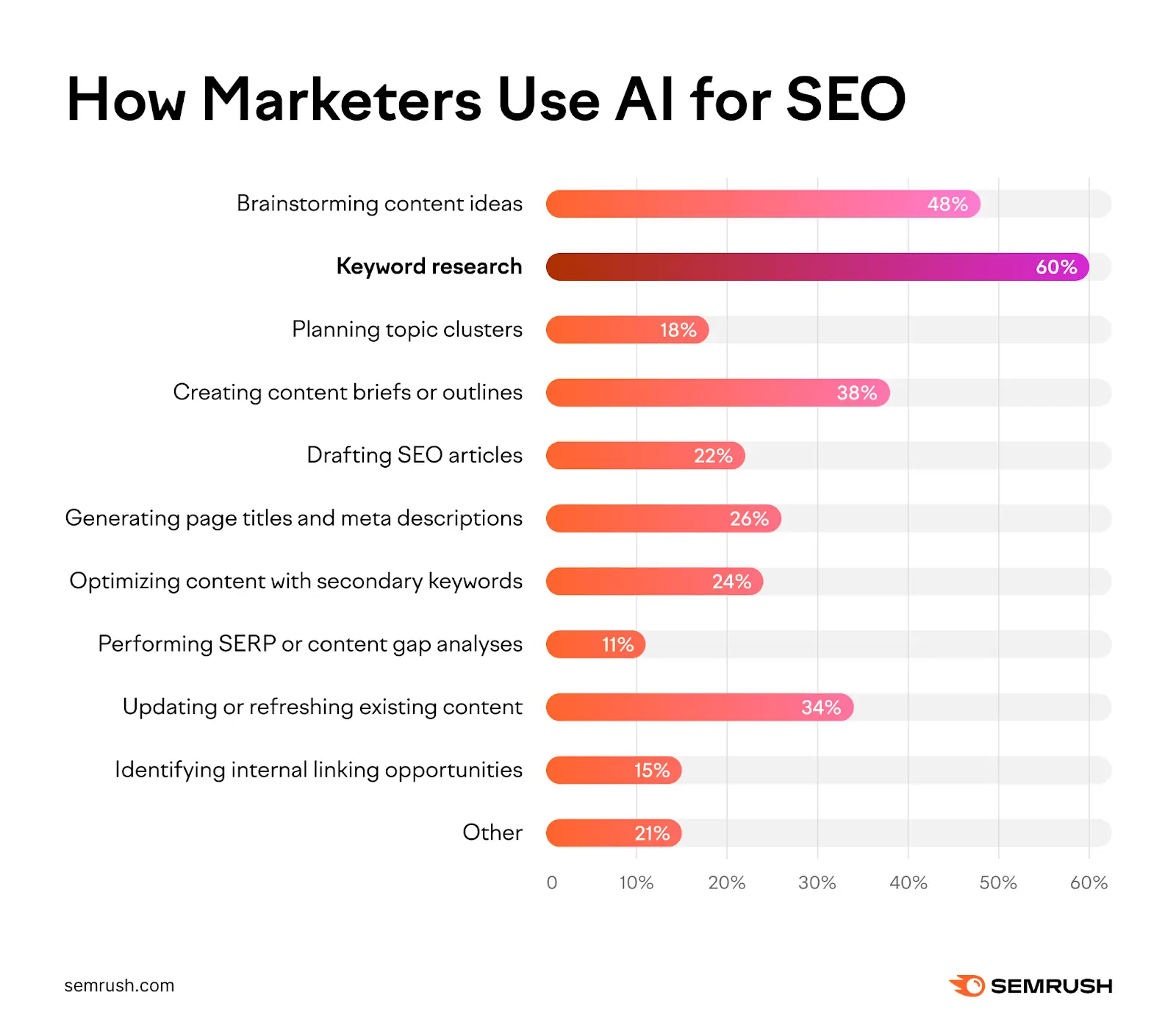
Image Source: Semrush
We'll discuss how AI is transforming SEO today and how you can leverage its benefits.
1. Better Research on the Keyword
Keyword study remains significant for SEO, but AI has made it more effective. Marketers used to conduct keyword research for SEO manually that had a high volume of searches and little competition. Now, AI tools like Ahrefs, SEMrush, and Surfer SEO utilize complex algorithms to identify hidden keyword opportunities and determine the user's intent behind each search.
When someone searches for "best laptops," AI can determine whether they want to buy, compare, or simply read reviews. With this information, you can ensure that the content you send is directed to the right people.
AI helps you focus on purpose instead of just numbers, which means you can get more engaged users and more sales.
2. Creating and Optimizing Content With AI
AI has taken the place of the king as the planner behind the throne. Modern tools like Jasper, Byword, and ChatGPT (GPT-5) can look at pages that are already doing well and help you write well-structured, SEO-friendly content in minutes. Not only do these tools write text, but they also give advice on tone, length, readability, and even the best keywords to use easily.
On the other hand, optimization platforms like Clearscope, Frase, and MarketMuse look at your current pieces and tell you precisely what you're missing, like internal links, related phrases, or specific themes.
What happened? It's possible for you to maintain your own style while still creating content that is useful for readers and search engines.
To make content even more engaging, brands are also using AI-powered visual creation tools. For example, platforms like AI Infographic Generator help turn complex data into clean, SEO-friendly visuals that keep users on the page longer and increase shareability. Visuals such as infographics, one-pagers, and flowcharts not only improve user experience but also attract high-quality backlinks — a major factor in SEO success.
3. Better Search Intent Analysis
AI is beneficial for SEO because it helps marketers figure out why people look, not just what they search for.
Google's own AI systems, such as RankBrain and BERT, prioritize meaning and context over individual terms. When you write something, you need to think about how people think and ask questions, and explore topics across the entire AI domain of search intent and user behavior.
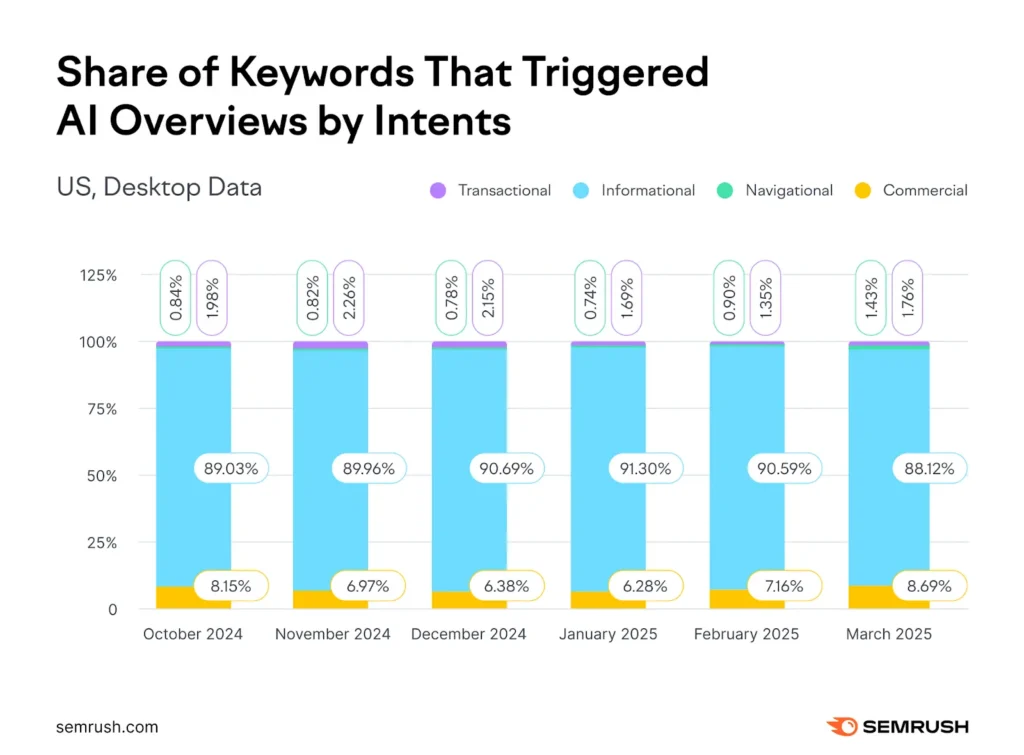
Image Source: Semrush
AI tools can analyze a vast amount of search data to determine what people genuinely want. What if many people search for "how to fix slow Wi-Fi?" An AI tool could find questions like "why is my router slow?" or "best way to speed up internet" that are connected.
With these insights, you can create more comprehensive and helpful content that addresses all related questions, which Google favors and rewards with higher rankings.
4. Google Trends and Predictive SEO Analysis
AI not only studies the past, but it also guesses what will happen in the future. Many marketers learn these predictive techniques through an AI Marketing Course, which helps them understand how machine-driven insights guide long-term SEO planning.
Agentic AI-powered platforms can predict future search trends by analyzing user behavior, seasonal trends, and market fluctuations. You can use tools that use predictive analytics to find keywords that are likely to become more prevalent.
This lets you plan your content calendar around new topics and get ahead of your rivals before they even know what's trending.
For example, if AI notices that searches for "AI-powered fitness apps" are going up, writing content early on about that topic can help you get a lot of traffic as the trend grows.
5. Voice Search and Conversational Optimization
These days, voice search is very important for SEO because of intelligent helpers like Alexa, Siri, and Google Assistant.
AI helps close the gap between how people speak and how they type. People might ask, "What's the best pizza near me?" with voice questions, which sound more like conversations, instead of putting "best pizza places."
AI tools can find these trends in natural English. This can help you write content that sounds more natural and ranks higher for voice searches.
You're more likely to show up in Google's featured snippets, which are the "position zero" results that voice helpers read out loud, if you optimize your site for voice search.

Further Reading: 6 Timely SEO Strategies and Resources for Voice Search
6. Optimized Technical SEO
Technical SEO can be terrifying because there are so many things to keep track of, like crawling mistakes, lost links, page speed, and mobile optimization. AI makes it easier, though.
AI is now used in tools to quickly scan whole websites, find problems, and rank the importance of fixes. Some tools even explain the issues in simple terms and suggest answers on their own.
This saves you hours of work and makes sure your website works perfectly, which is very important because Google's algorithms strongly favor websites that load quickly, are well-structured, and are easy for people to use.
7. Build and Reach Out to Links Smarter
One of the most complex parts of SEO is still link building. AI can take away a lot of the work. AI-powered platforms analyze websites, identify pertinent backlink opportunities, and even generate customized outreach messages.
AI helps make tailored pitches that have a better chance of succeeding, so that hundreds of general emails are not sent. These AI-tailored pitches land even better when they point to real, measurable outcomes, like a case study showing how a team streamlined a messy workflow.
AI can also check the quality of backlinks and flag any that could hurt your results. It can also suggest better ways to work together or post as a guest.
Advanced AI Applications in Modern SEO
1. AI for Competitor Analysis
AI has dramatically improved how marketers analyze competitors and SERP landscapes. Instead of manually checking ranking pages, AI tools scan thousands of competitor URLs to identify keyword gaps, backlink patterns, top-performing content formats, and ranking signals.
Platforms use machine learning to show which topics competitors are doubling down on, how their traffic shifts, and what opportunities they’re missing. This helps brands make smarter, data-driven decisions and stay ahead in competitive niches.
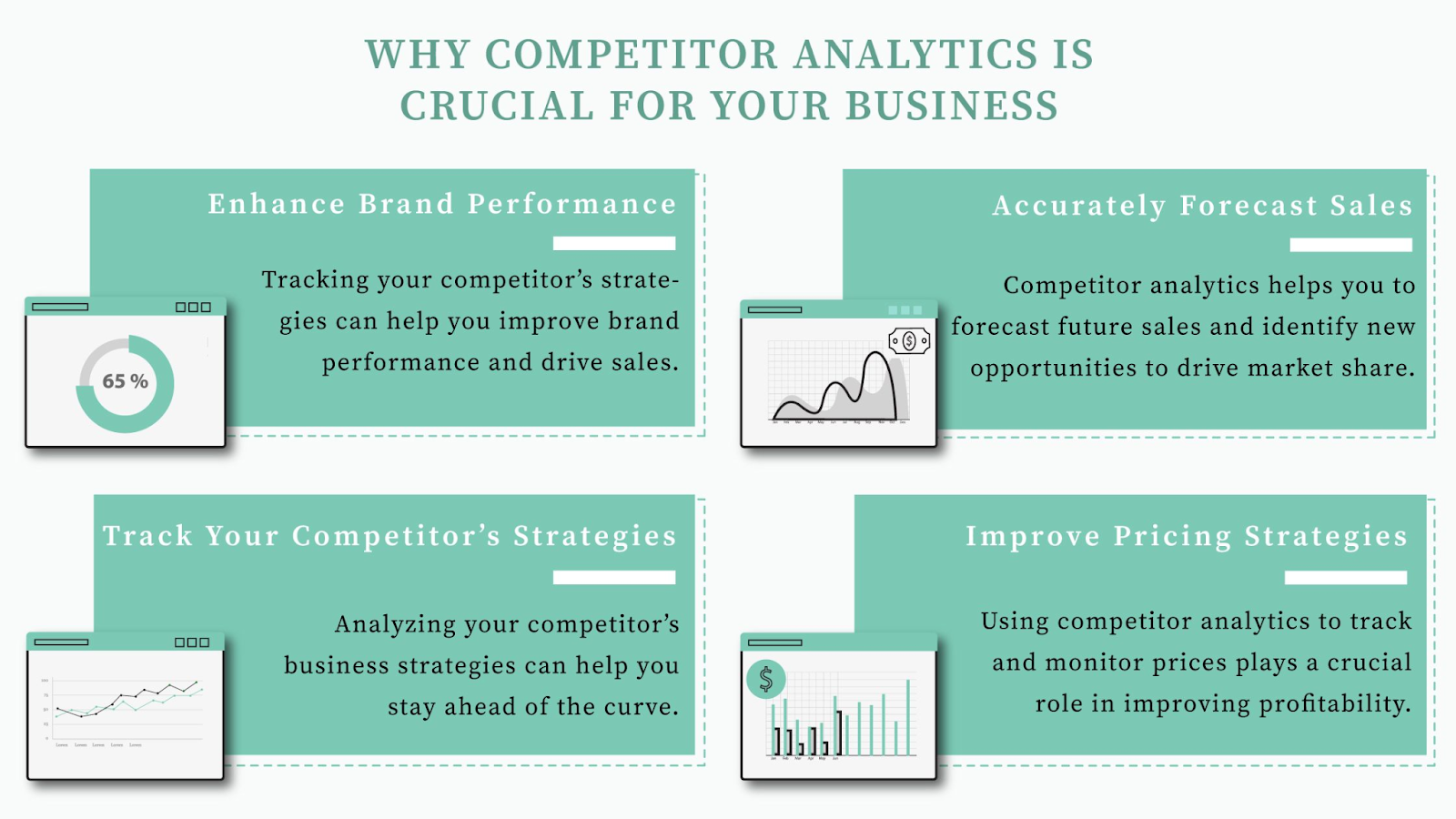
2. AI for UX Optimization
User experience plays a major role in SEO, and AI makes it easier to understand how real users interact with websites. AI tools analyze heatmaps, scroll depth, click behavior, and engagement patterns to pinpoint friction points and areas where users drop off. With this data, brands can improve layout, navigation, content structure, and overall usability. AI-powered A/B testing tools also recommend variations that increase engagement and satisfaction—both of which directly support better search rankings.
3. AI for Local SEO
Local SEO has evolved beyond citations and Google Business Profile updates. AI now helps businesses optimize for hyperlocal intent by analyzing nearby search patterns, competitor listings, local keyword clusters, and customer sentiment in reviews. AI tools can automatically audit your GBP profile, monitor ranking fluctuations across locations, and suggest improvements that increase visibility in “near me” searches. This gives local businesses a measurable competitive advantage in crowded regional markets.
4. AI for Multimodal SEO
Search is no longer limited to text—users search using images, voice, and video. AI helps brands optimize for this multimodal world by generating accurate alt-text, analyzing visual content relevance, transcribing videos, identifying keyword opportunities within transcripts, and optimizing YouTube content. With models like Google MUM understanding visuals + text together, AI ensures your multimedia assets meet modern search expectations. This leads to better rankings in image packs, video carousels, and voice-driven queries.
5. AI for Automation Workflows
AI is enabling SEO teams to automate repetitive tasks and scale their operations. From automating keyword clustering and content briefs to scheduling internal link updates, generating meta tags, and running technical audits, AI reduces hours of manual work. Using platforms like DashClicks can build workflows that perform recurring SEO checks, pull fresh data, and even update pages automatically. This ensures consistency, speed, and long-term SEO stability.
6. AI for Content Quality & EEAT
As AI-generated content becomes more common, Google places more emphasis on expertise, experience, authoritativeness, and trustworthiness (EEAT). AI plays an important role here by analyzing top-ranking pages and identifying what high-EEAT content looks like—data evidence, expert quotes, structure, depth, and tone.
AI tools can flag factual gaps, detect weak or generic content, and suggest improvements to increase credibility. They also help ensure accuracy by cross-referencing information with reliable sources, making your content stronger in Google’s eyes.
How DashClicks’ White Label SEO Services Help in SEO?
DashClicks’ white label SEO services and software provide agencies with a complete, ready-to-deliver SEO infrastructure that streamlines operations and improves campaign results. Instead of managing everything in-house, agencies can outsource SEO tasks to a dedicated team while still presenting the work under their own brand.
The service covers all essential areas of SEO, including keyword research, on-page optimization, technical audits, backlink outreach, and ongoing performance tracking. DashClicks also offers detailed reporting through white-labeled dashboards, giving clients full visibility into rankings, traffic changes, and campaign progress.
By handling execution, reporting, and optimization, DashClicks allows agencies to focus on strategy, client acquisition, and relationship management. This makes it easier to scale, maintain consistent quality across campaigns, and deliver SEO results without expanding internal resources.
Wrapping It Up
The way we think about SEO has changed a lot because of AI. It's made the process go more quickly, correctly, and with the intention of giving people real value.
With AI tools, marketers can do everything from keyword research and content optimization to technical checks and predictive analytics. This gives them an edge in the crowded digital space.


No results found.
Please try different keywords.
Get Started with
DashClicks Today
Get found online, convert leads faster, generate more revenue, and improve your reputation with our all-in-one platform.
.svg)
Unlimited Sub-Accounts
.svg)
Unlimited Users
.svg)
All Apps
.svg)
All Features
.svg)
White-Labeled
.svg)
Active Community
.svg)
Mobile App
.svg)
Live Support
.svg)
100+ Tutorials
.svg)
Unlimited Sub-Accounts
.svg)
Unlimited Users
.svg)
All Apps
.svg)
All Features
.svg)
White-Labeled
.svg)
Active Community
.svg)
Mobile App
.svg)
Live Support
.svg)
100+ Tutorials
.svg)
Unlimited Sub-Accounts
.svg)
Unlimited Users
.svg)
All Apps
.svg)
All Features
.svg)
White-Labeled
.svg)
Active Community
.svg)
Mobile App
.svg)
Live Support
.svg)
100+ Tutorials



.svg)
.svg)
.svg)
.svg)
.svg)


